- Excellent hybrid drivetrain is peppy and efficient
- Lovely ride and handling balance
- Comfortable and spacious interior
- It just costs too much to buy
- No spare wheel
- No cheaper hybrid variant
We’ve been quite impressed with the latest round of new Honda products. As part of a rejuvenated lineup in Australia with an almost all-new product range, we’ve seen the newest Civic and its HR-V sibling score quite highly in previous DiscoverAuto reviews thanks to their long list of attributes, including improved quality and dynamics, more standard equipment and improved running costs. We’re happy to report that Honda has stepped up its game further with the 2023 Honda Civic e:HEV LX hybrid – but is it worth consideration over its rivals? Let’s find out.
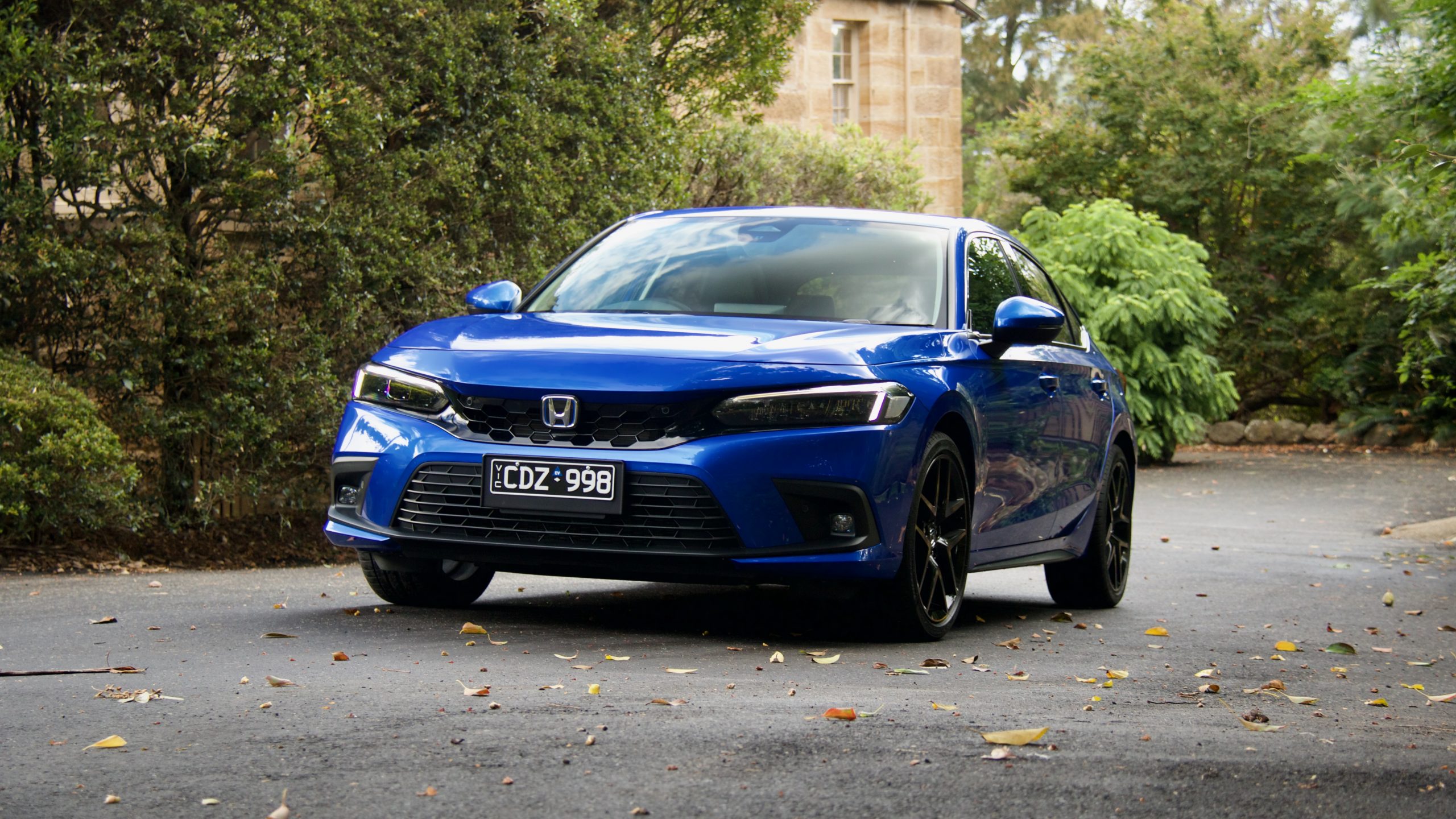
Honda’s switch to an agency model – where the company owns all stock in the country, instead of dealerships and the pricing is fixed across the country – has not been without controversy. Plus, the price of the new-generation Civic has grown compared with the last one. Is the return to excellent forward-thinking engineering worth the extra cost?
Price & Equipment: 6/10
Where the petrol-powered Civic is priced from $47,200 drive away, the e:HEV LX hybrid sits in the middle of the range priced at $55,000 drive away – the high performance Type R is $72,600 drive away.
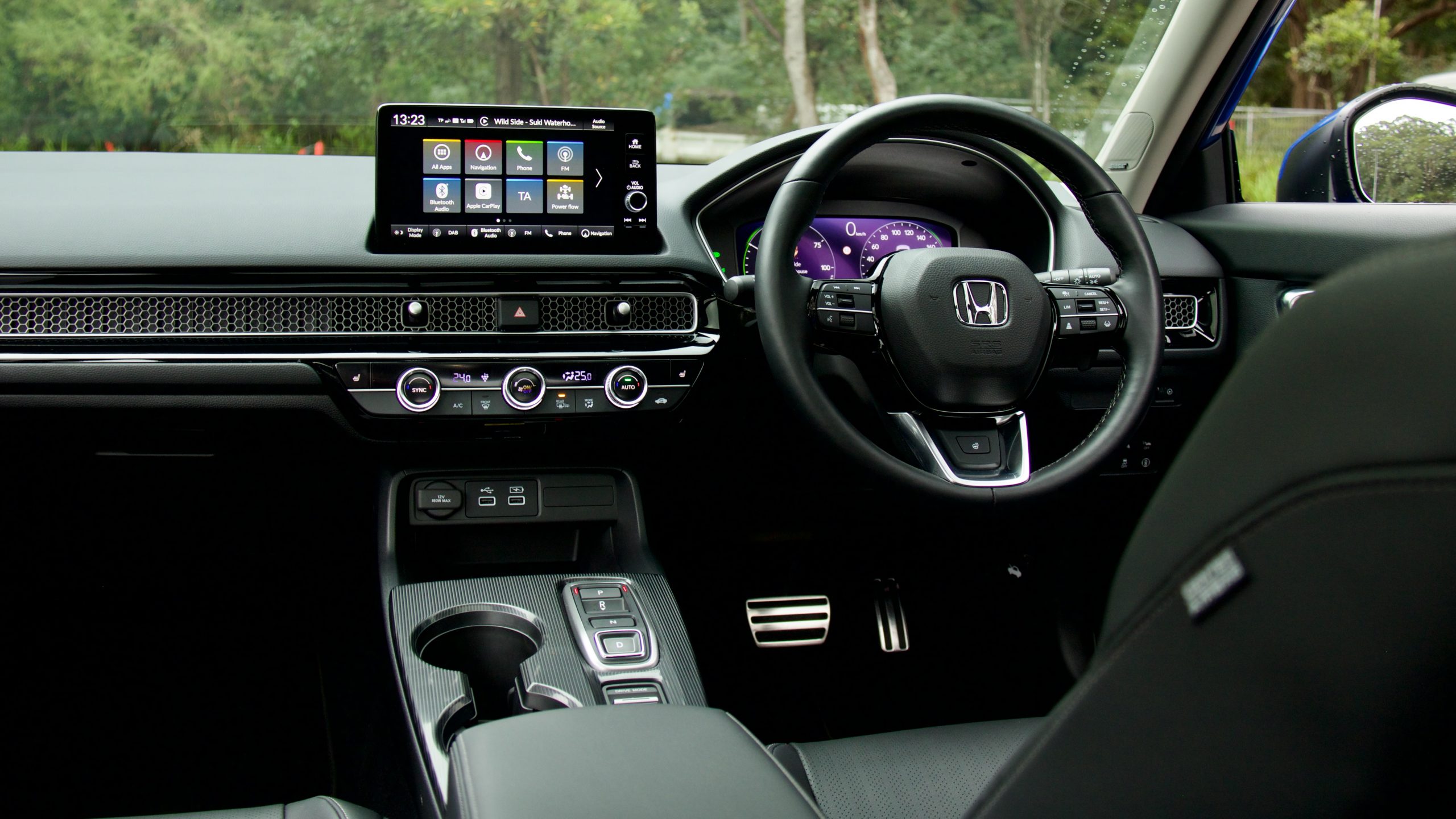
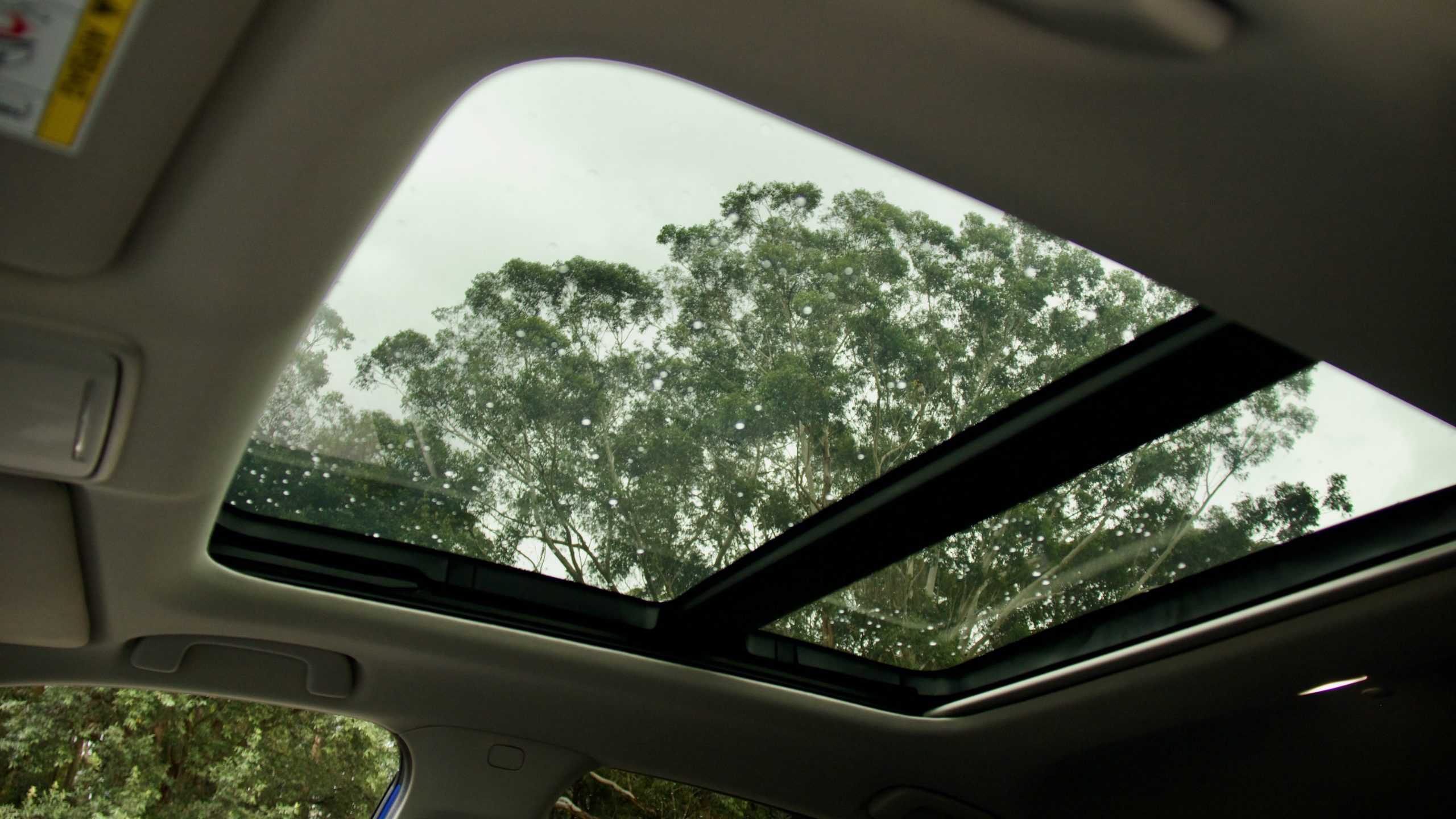
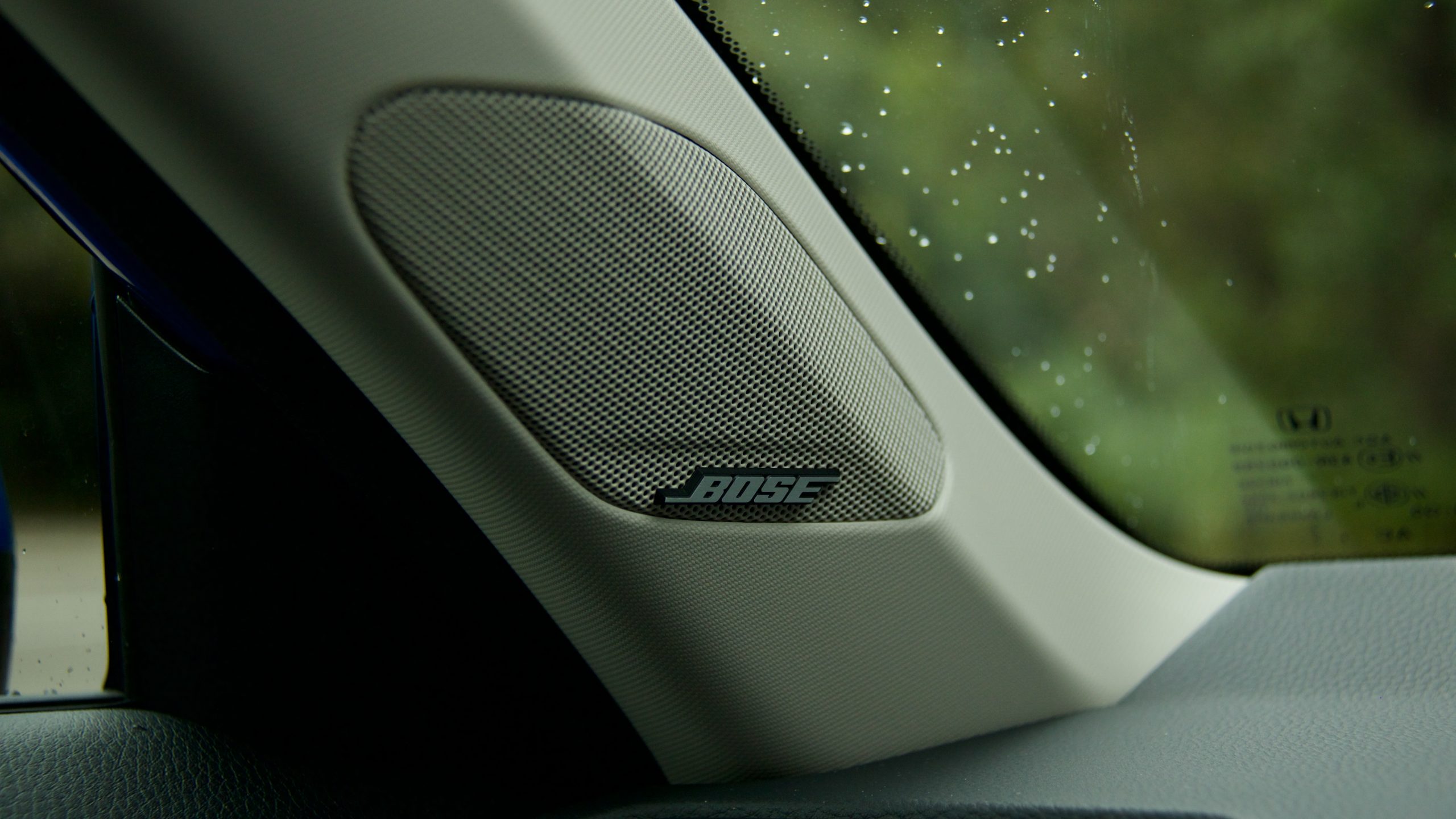
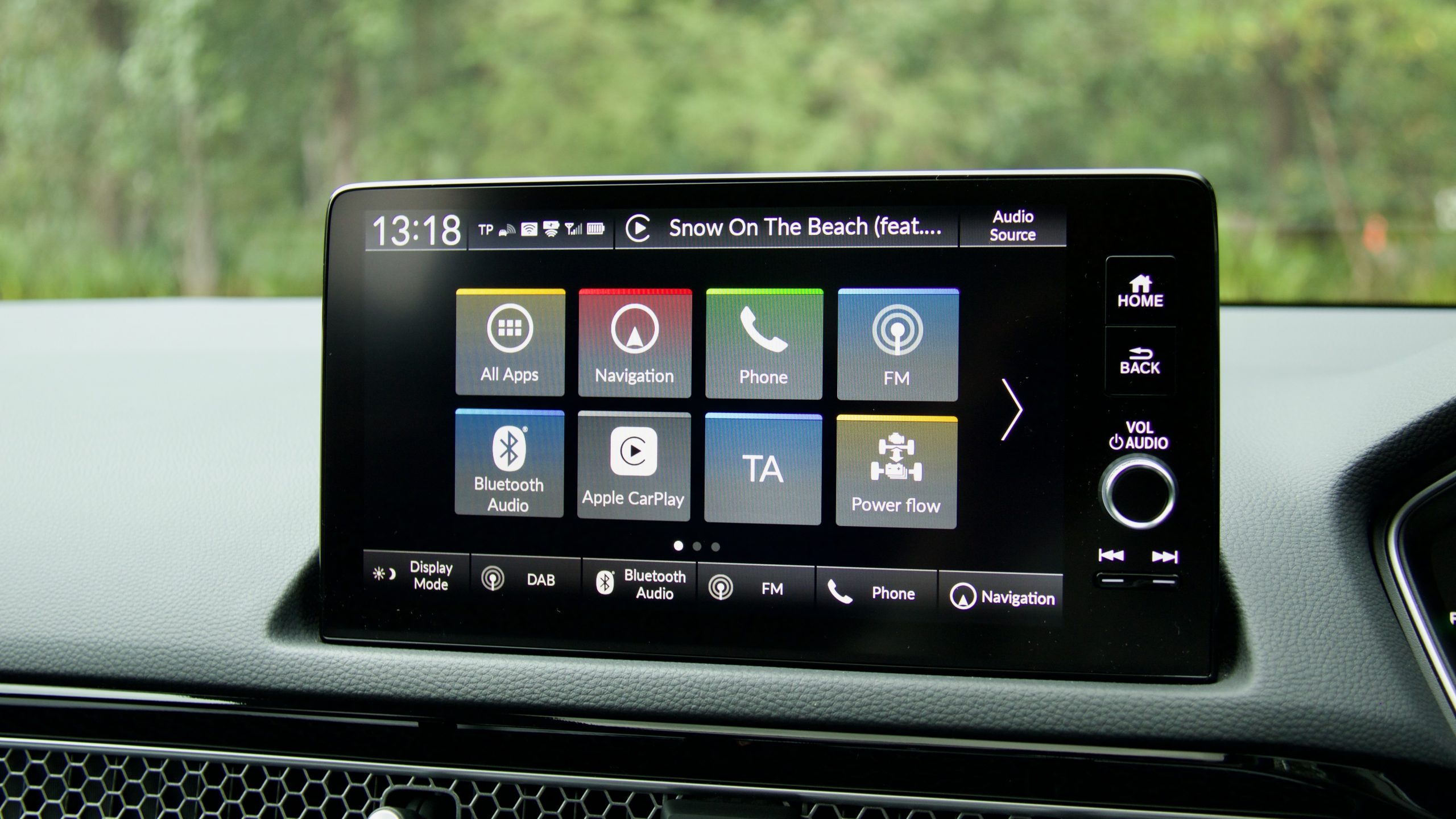
Standard equipment on the 2023 Honda Civic e:HEV LX hybrid includes 18-inch alloy wheels, automatic dusk- and rain-sensing headlights, auto wipers with integrated washer jets, keyless entry and start, a panoramic sunroof, rear privacy glass, heated and auto-folding mirrors, leather upholstery, heated 10-way driver/four-way passenger electrically adjustable front seats, a heated leather steering wheel with paddle shifters for brake regeneration adjustment, a 9.0-inch touchscreen with live services, wireless Apple CarPlay and wired Android Auto, digital radio, satellite navigation, a wireless phone charger, four USB ports, an eight-speaker Bose sound system, a 12.3-inch digital driver’s display, selectable driving modes and LED ambient lighting.
Safety equipment includes 10 airbags (including both front centre and rear side units), auto emergency braking (AEB) with pedestrian and cyclist detection, lane keep assist with lane trace assist, adaptive cruise control with stop and go functionality, traffic jam assist, auto high beam, blind-spot monitoring, rear cross-traffic alert, intelligent speed assist, driver attention monitoring, speed sign recognition, front and rear parking sensors and a reversing camera. The Civic is yet to be tested by ANCAP but earned a five-star Euro NCAP rating in 2022.
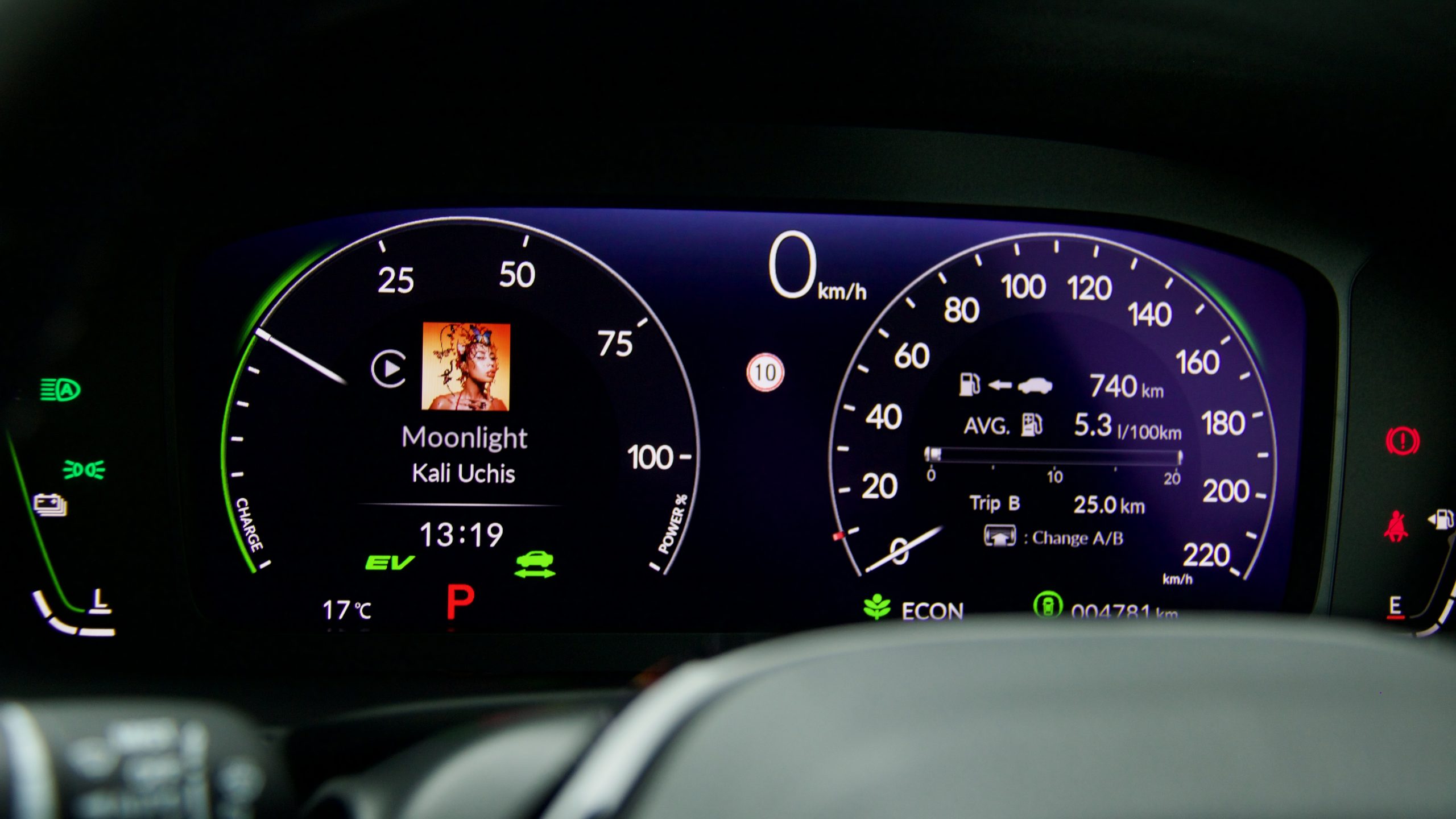
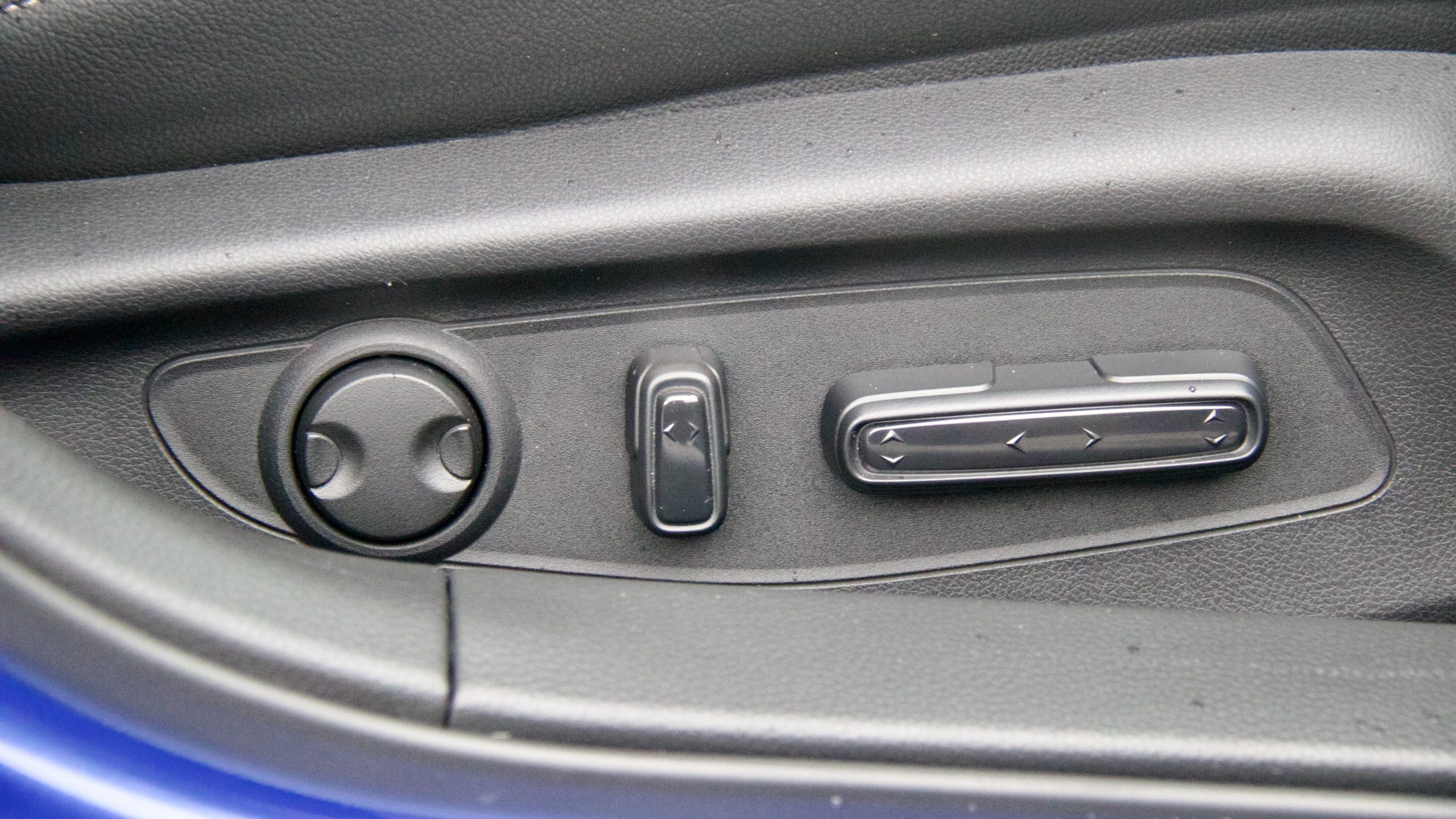
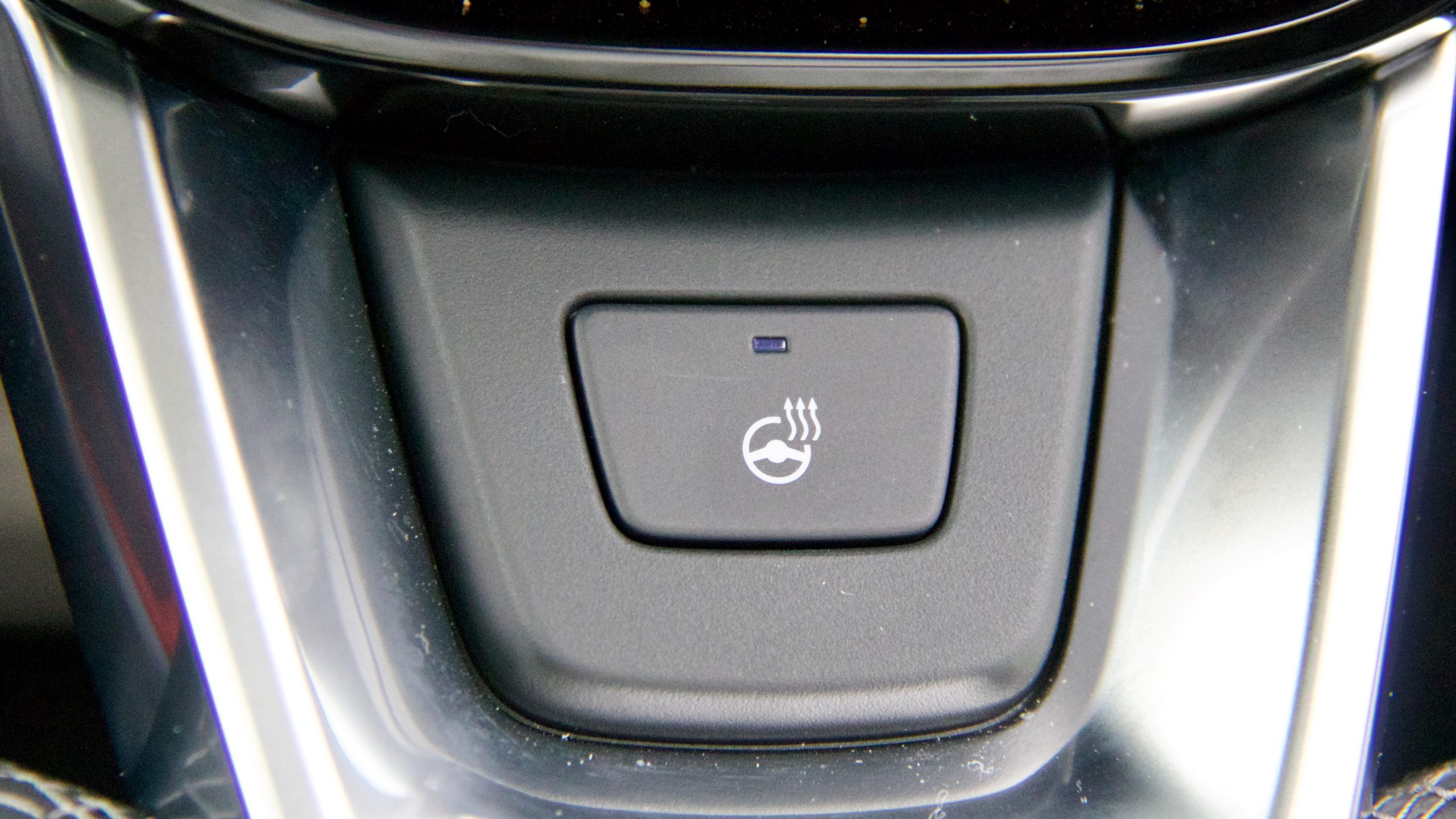
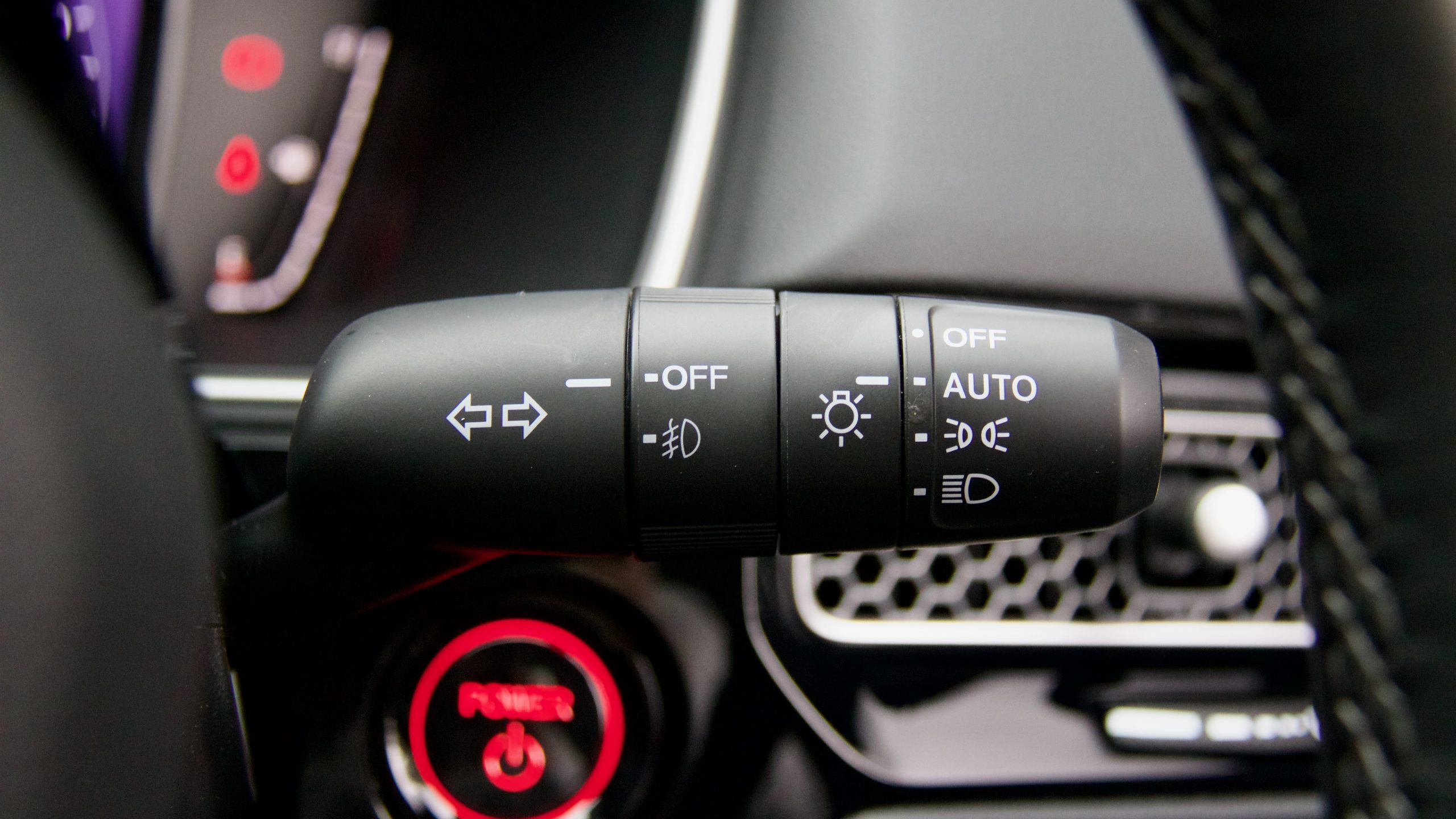
Just three colours are available on the Civic e:HEV hybrid: ‘Platinum White’, ‘Premium Crystal Red’ and our test car’s ‘Premium Crystal Blue’ – all are no-cost extra. Black leather is the only interior trim available.
We don’t think there’s much equipment missing from the Civic e:HEV LX: just a heads-up display, a 360-degree camera, USB-C ports for quicker charging, reverse automatic braking and heated rear seats. Plus, overseas models feature Matrix adaptive high beam for the headlights, but not locally.
Despite many buyers flocking to SUVs, there are still many rivals to the Civic: the Mazda3, Toyota Corolla, Subaru Impreza, Volkswagen Golf, Cupra Leon and Hyundai i30, to name a few. There are a few direct rivals to the Civic e:HEV LX though – we think that the Toyota Corolla ZR Hybrid (priced from around $42,500 drive away) is the most direct rival, though the Mazda3 G25 Astina (from around $45,000 drive away) will also no doubt be cross shopped too.
The $12,500 price difference between the Corolla ZR Hybrid and Civic e:HEV LX is big, though the Civic does offer extra equipment over the Corolla, including a panoramic sunroof, full leather upholstery, an electric front passenger’s seat, a heated steering wheel, extra speakers, rear USB ports, a larger touchscreen and three extra airbags, though the Corolla has a heads-up display, intersection assist for the automatic emergency braking system and reverse automatic braking.
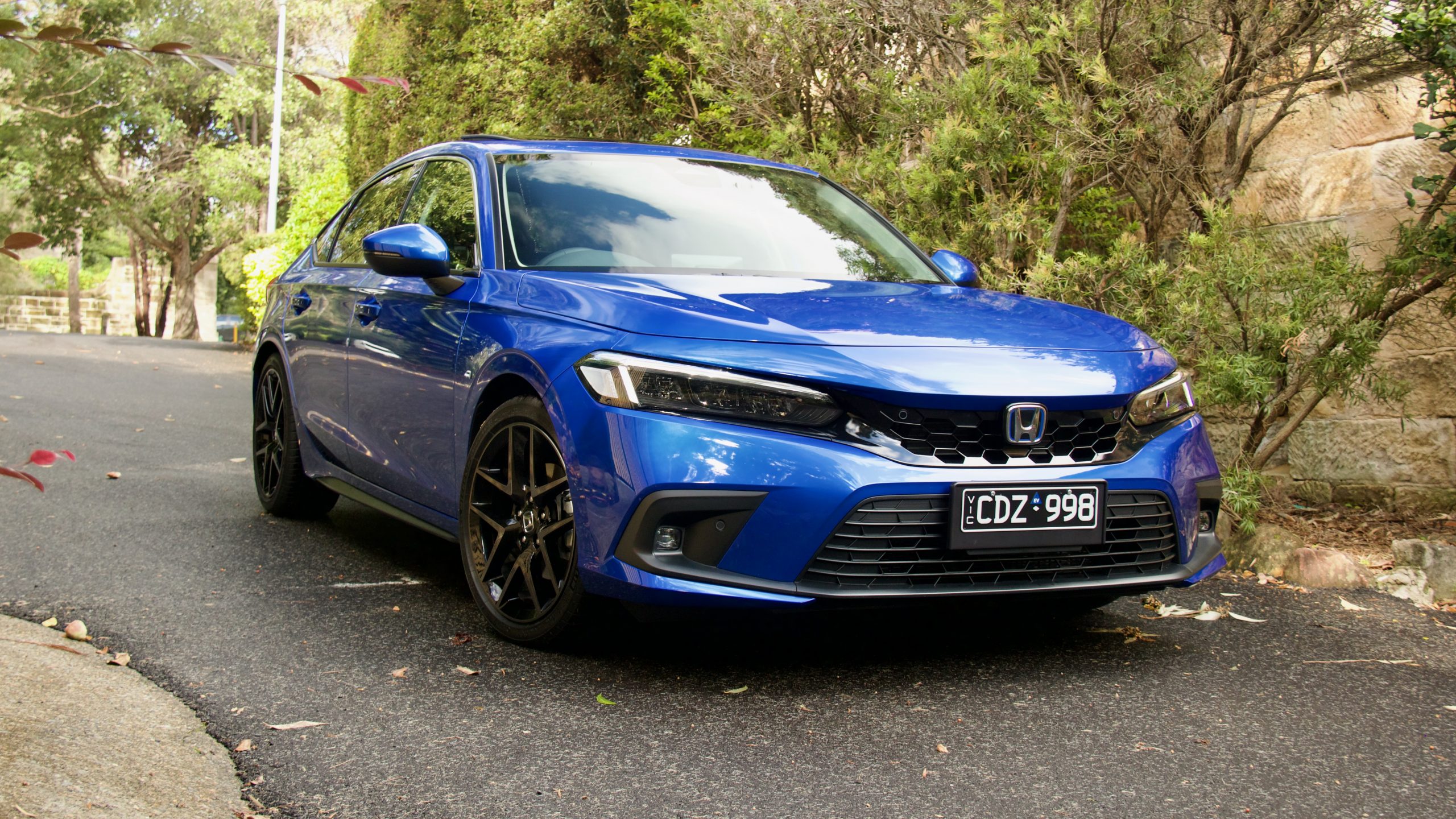
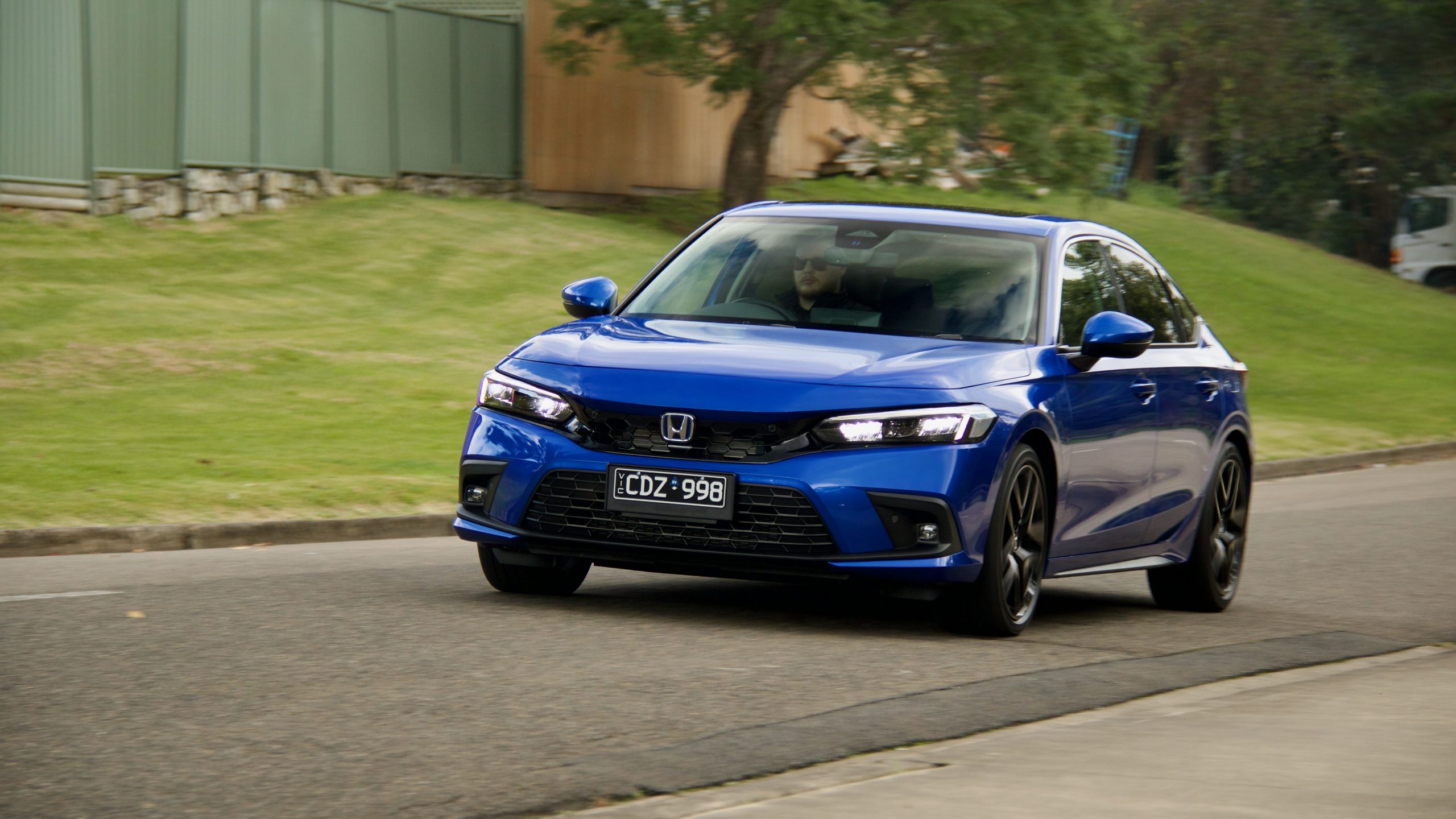
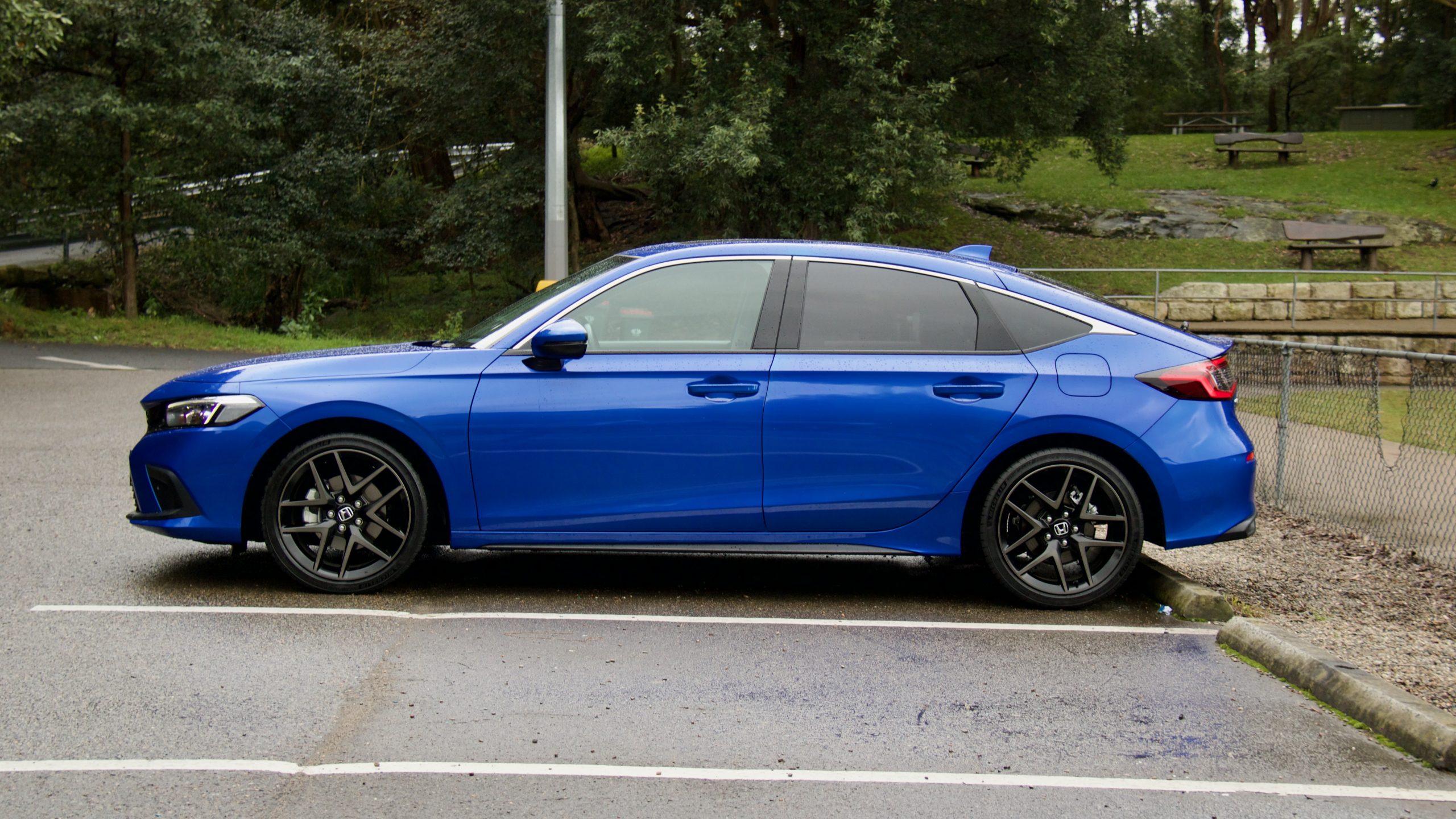
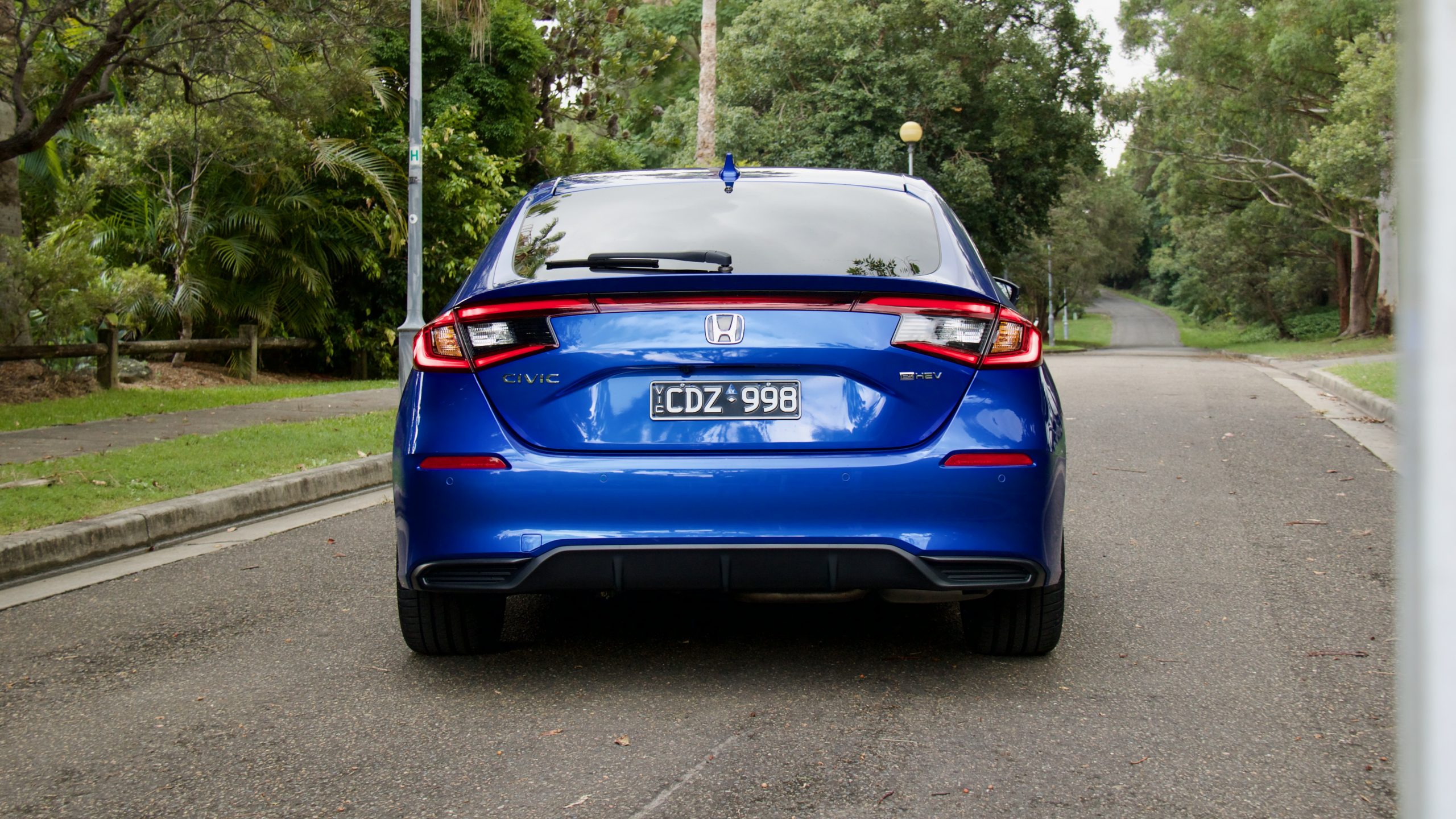
The price difference between the Civic and the non-hybrid Mazda3 is around $10,000 and the Civic adds a panoramic roof, rear seat charging ports, three extra airbags, a wireless charger, a fully-digital instrument cluster and live services, though the Mazda3 still features a 360-degree camera, a heads-up display, rear automatic braking and front cross-traffic alert over the Civic. Yet against entry-level rivals from BMW, Mercedes-Benz and Audi, the Civic has far more standard equipment, so we can see the value for it there. Overall however, priced closer to $50,000 drive away as we think it should be would make the Civic e:HEV LX far better value for money against its traditional rivals.
What would also make the Civic hybrid better value is offering a lower-spec model – a cheaper hybrid using the same level of equipment as the petrol VTi-LX (though with the same 10 airbags – we think this should be standard across the Civic range) for under $50,000 drive away would open the hybrid up to more buyers and ultimately, offer better value in the Civic range.
Performance & Economy: 9/10
Under the bonnet of the 2023 Honda Civic e:HEV LX is a 2.0-litre Atkinson Cycle four-cylinder petrol engine that’s matched to a dual-motor hybrid system and an e-CVT automatic transmission to drive the front wheels only. It makes a healthy 135kW of power (between 5,000rpm and 6,000rpm) and 315Nm of torque (from 0 to 2,000rpm) – quick enough for a claimed 8.1 second 0-100km/h run, though it feels quicker in real life thanks to the electric motor’s torque hitting nice and low in the rev range.
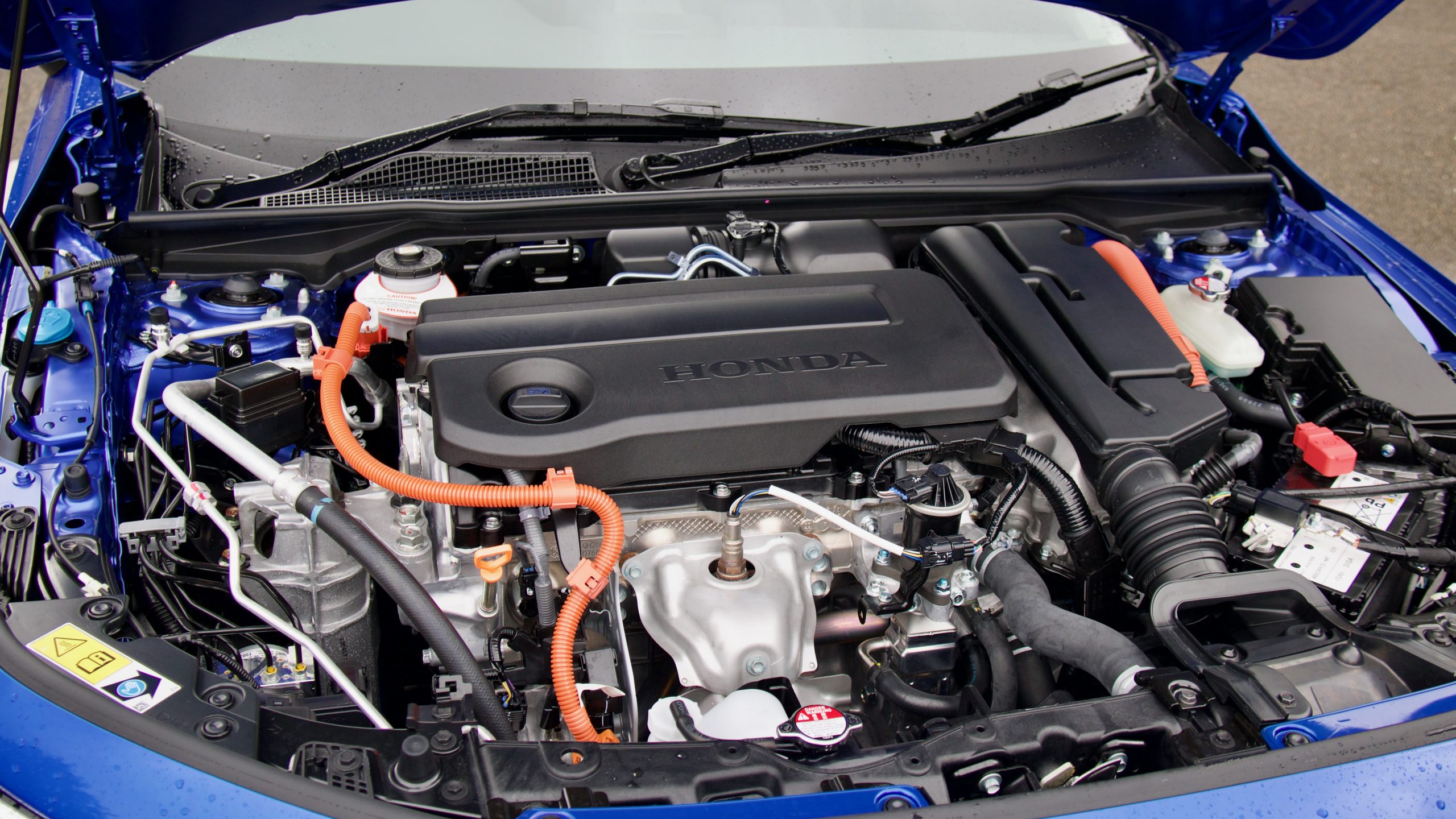
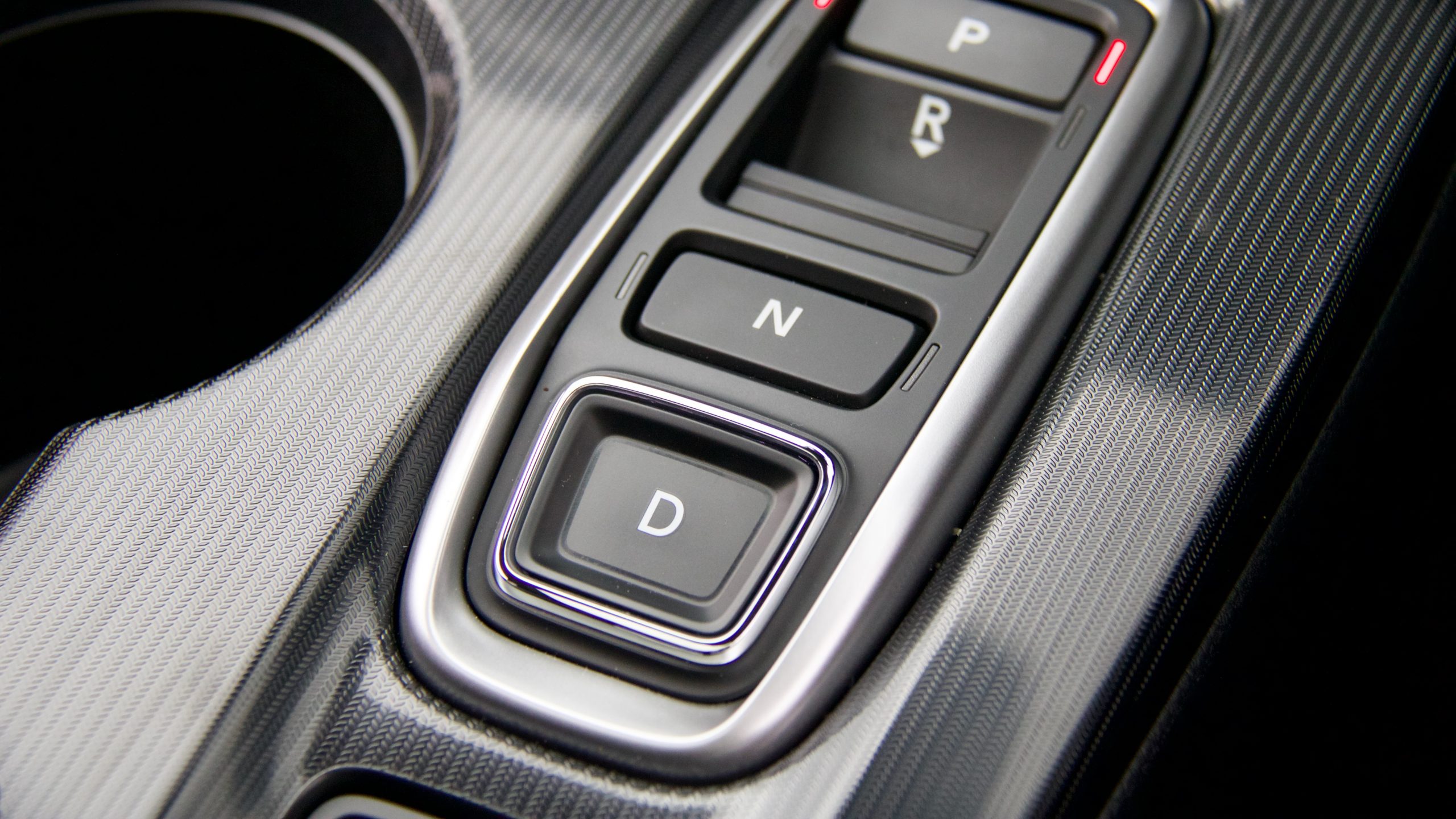
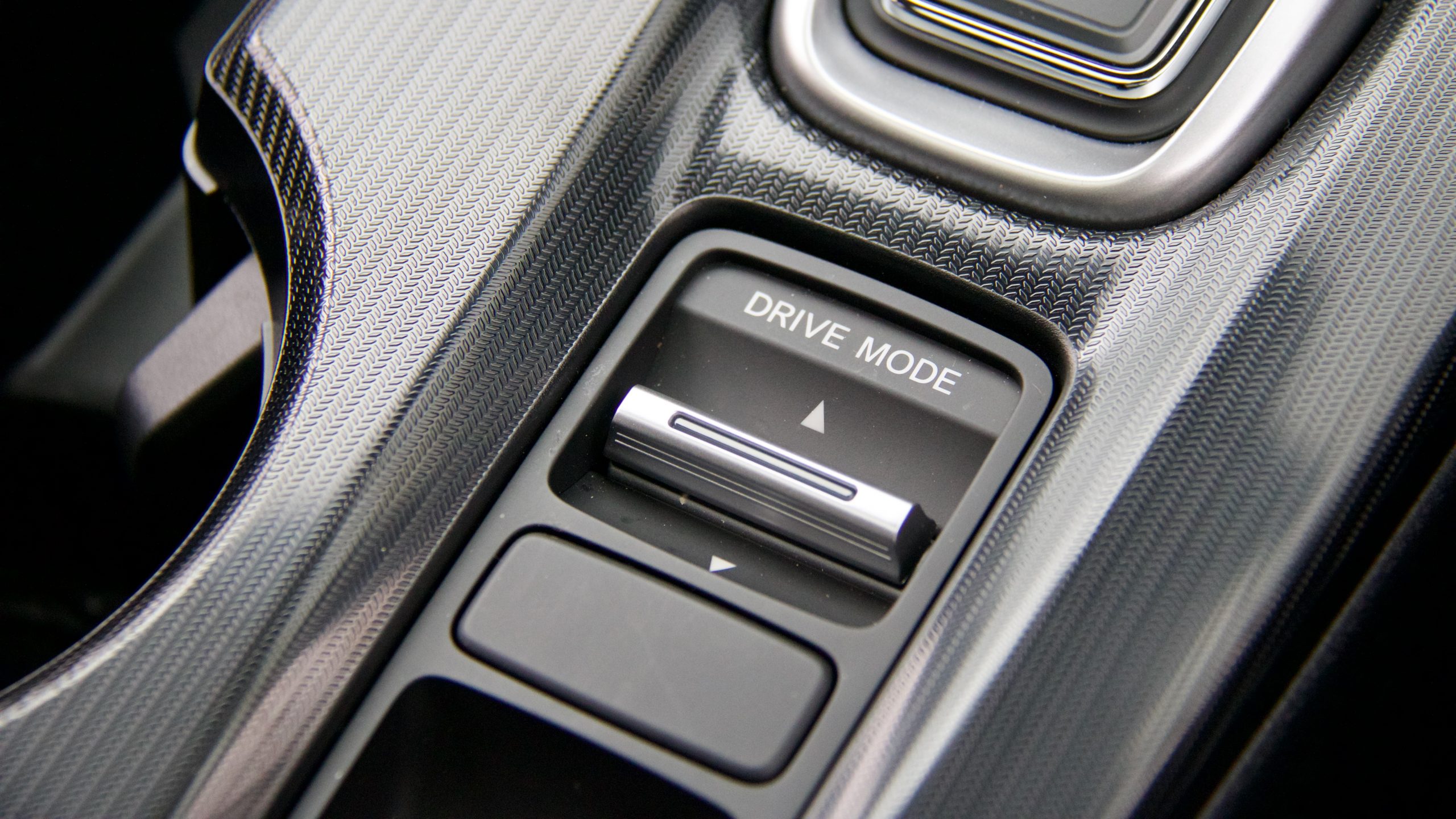
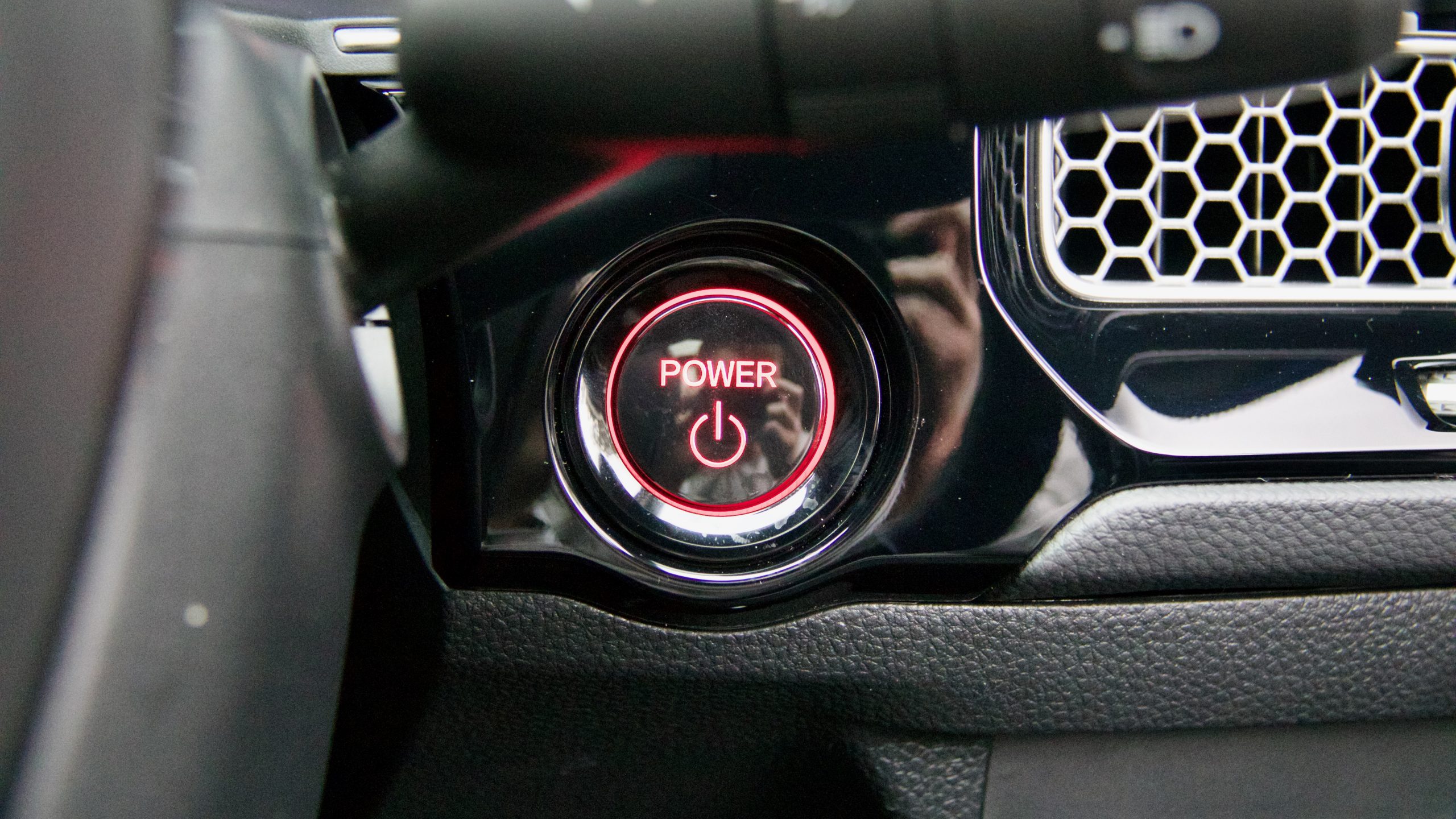
Unlike Nissan’s hybrid system where the engine purely drives the electric motor which then powers the wheels, Honda’s engine can also power the wheels directly and does so mostly at highway speeds. That, according to the brand, makes it more efficient. In reality, the drivetrain is excellent – it’s extremely smooth, relatively quiet and offers a good level of performance. There are paddle shifters to control the regenerative braking – though the system oddly reverts to its middle setting after a while, and there’s no dedicated EV mode either, unlike Toyota hybrids.
Unlike Toyota’s 1.8-litre hybrid system, which doesn’t have a transmission, the Civic hybrid has an electronically controlled CVT automatic. That doesn’t sound amazing, but in reality, it’s great. While you can sometimes get that typical CVT-like drone we’ve become used to with hybrids, when you’re punting it harder, the stepped ratios activate and it sounds remarkably like a regular torque converter automatic transmission. It’s fabulous – if only the transmission select buttons were as good.
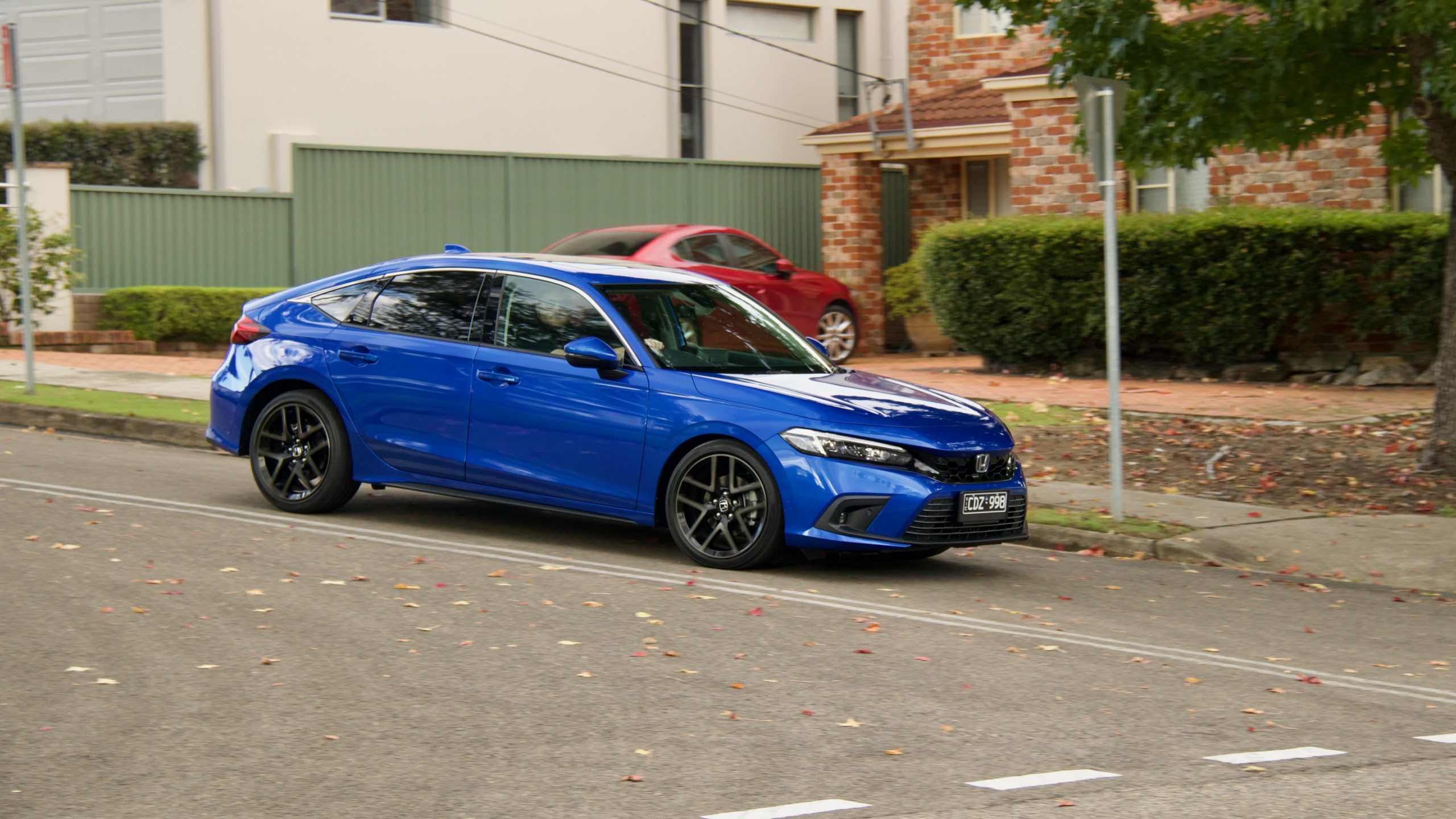
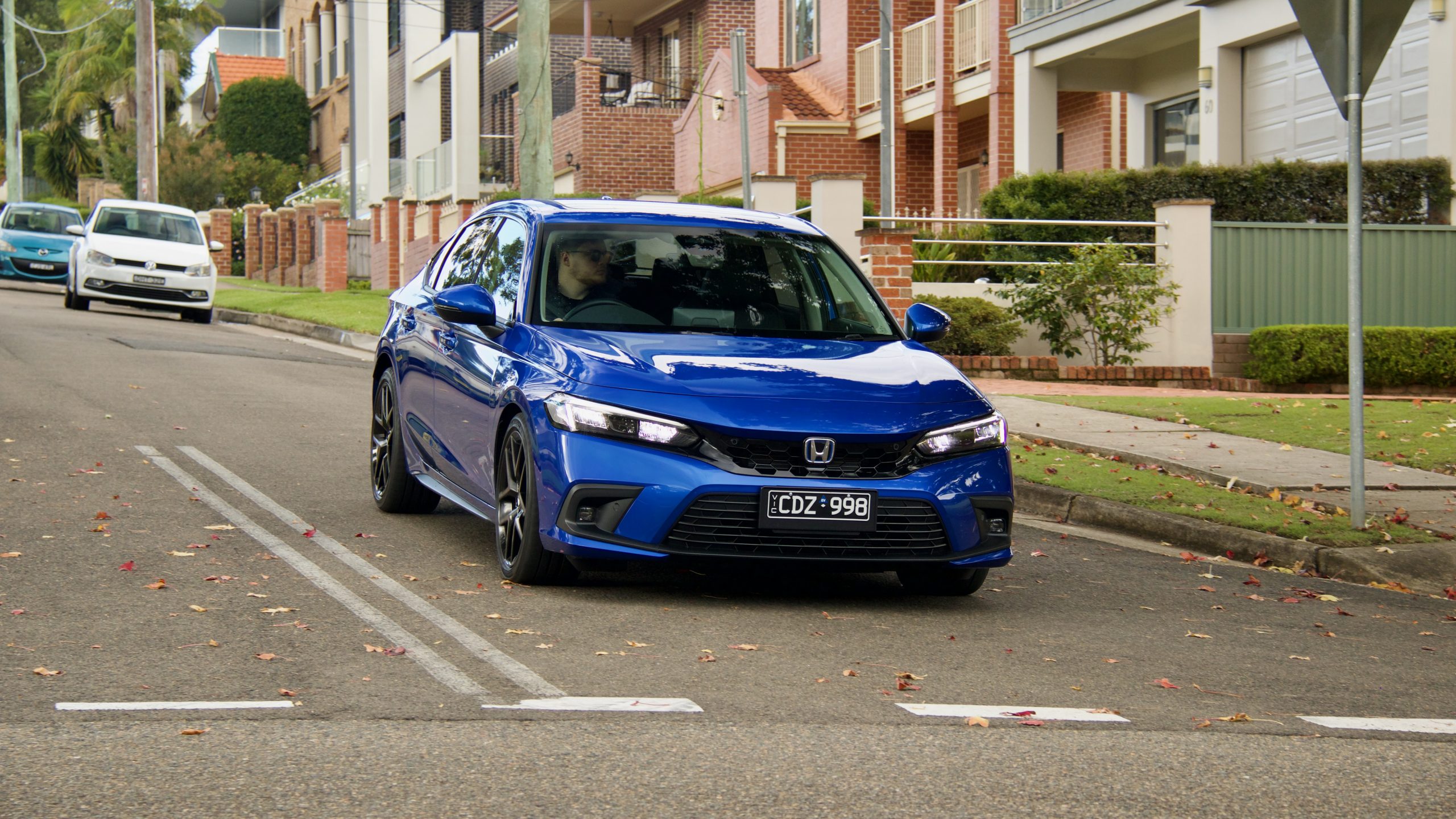
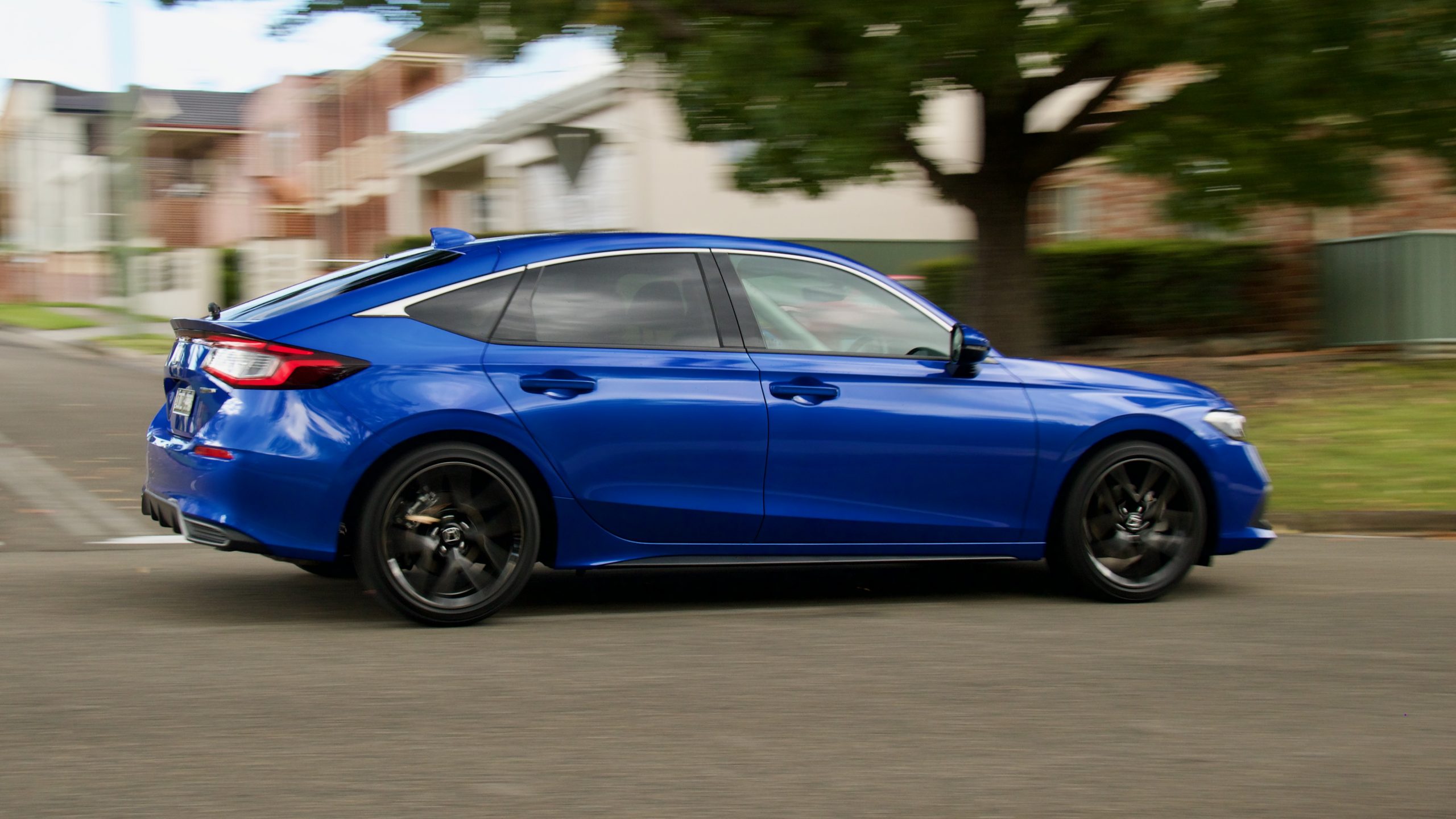
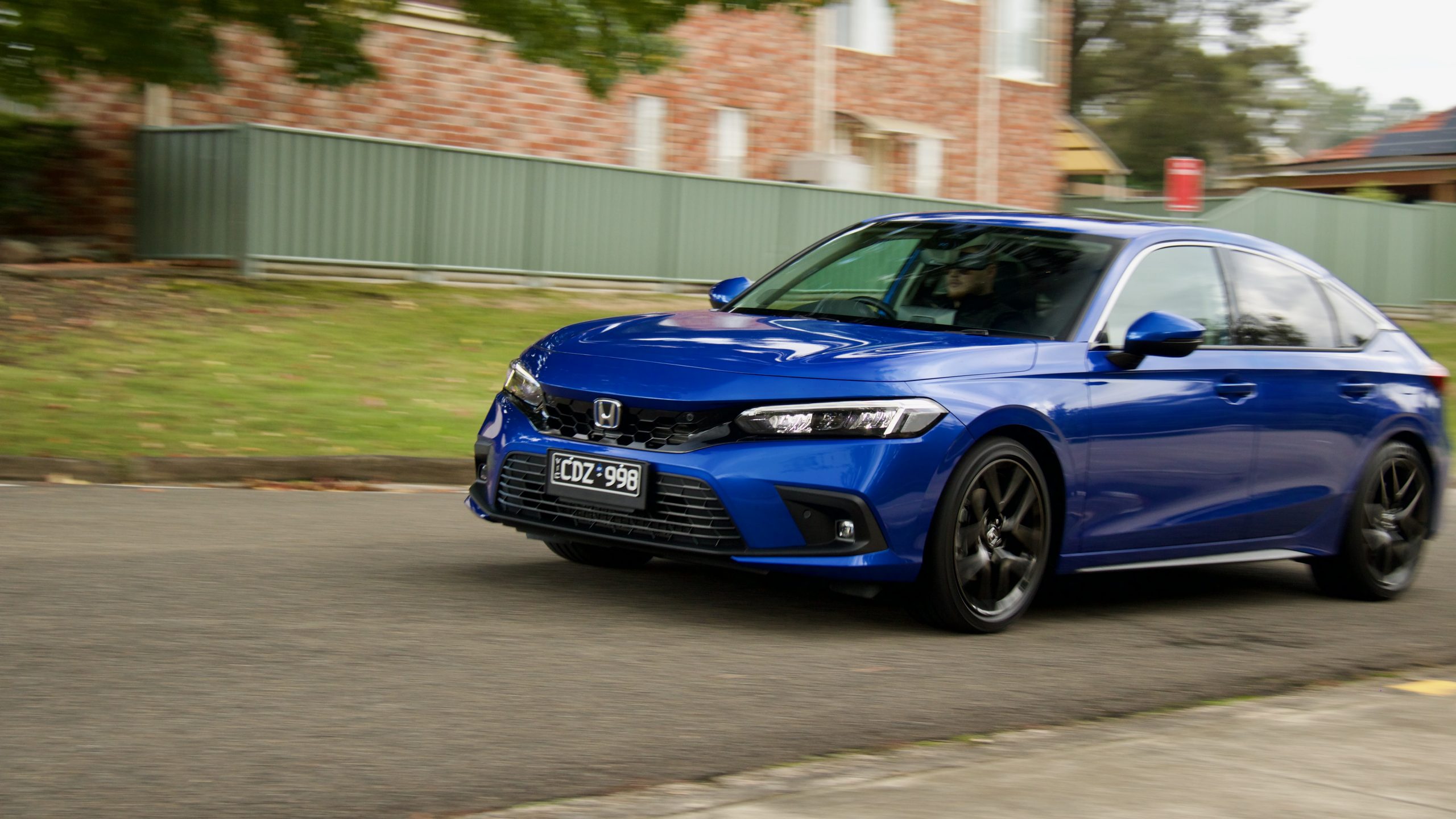
The claimed combined fuel consumption for the 2023 Honda Civic e:HEV LX hybrid is 4.3L/100km, with CO2 emissions rated at just 96g/km – in our week with it, we used 4.7L/100km. Helping running costs further is that it can run on 91RON regular unleaded and it has a 40-litre fuel tank. In our experience, the hybrid Corolla ZR Hybrid is a touch more efficient than the Civic, but it also makes 32kW less power. The non-hybrid Mazda3? It used almost double the fuel of the Civic in our testing.
Ride & Handling: 9/10
As we discovered in the 1.5-litre turbo-petrol Civic VTi-LX, the latest generation 2023 Honda Civic rides and handles quite well. Even with an extra 128kg of weight thanks to the hybrid system and its lithium ion battery, it still feels nimble and spritely, and its ride quality is pretty good as well thanks to well tuned suspension and great body control. Its handling is fun too, thanks to the light but quick steering and great balance for an overall pretty accomplished chassis.
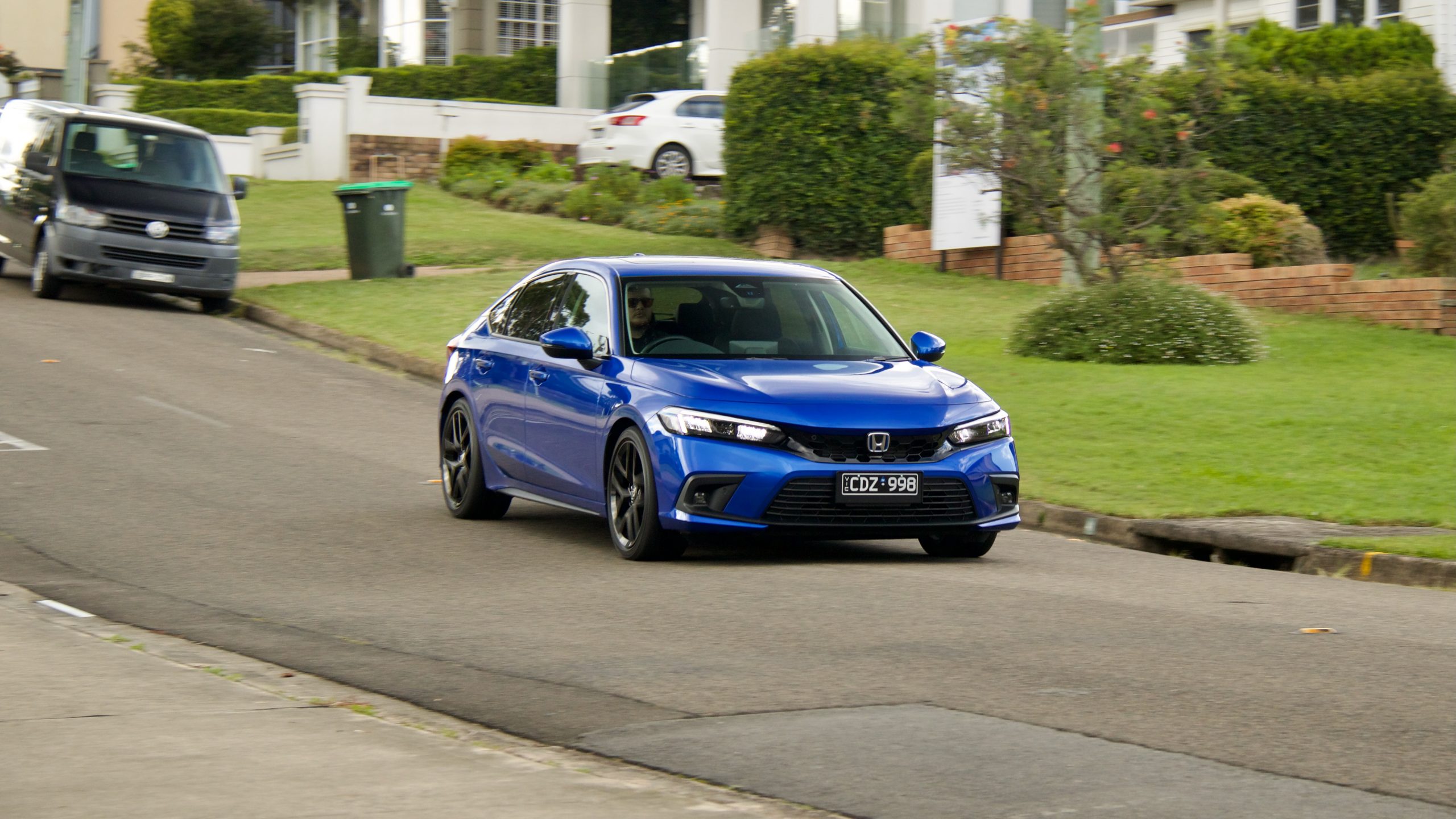
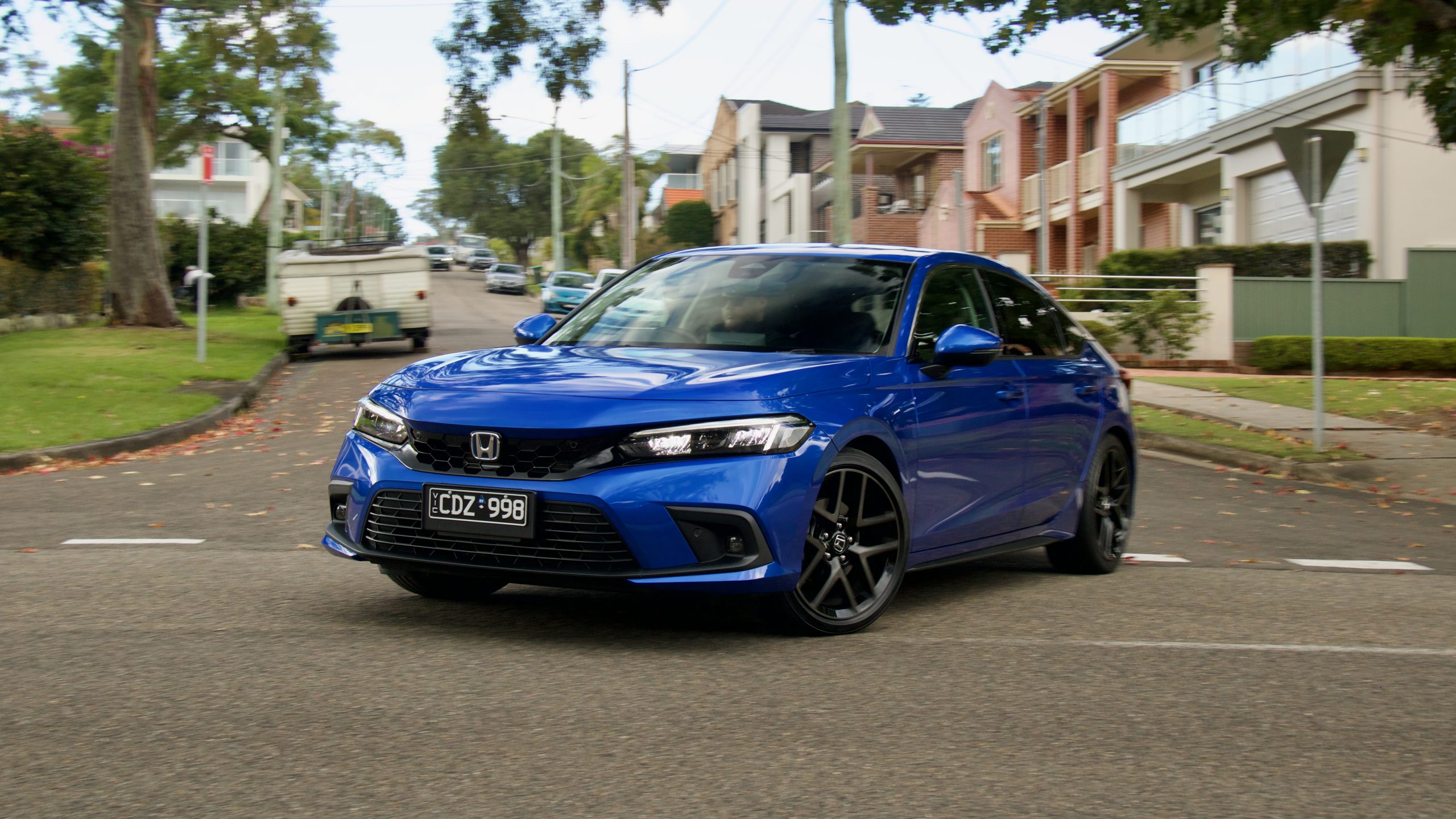
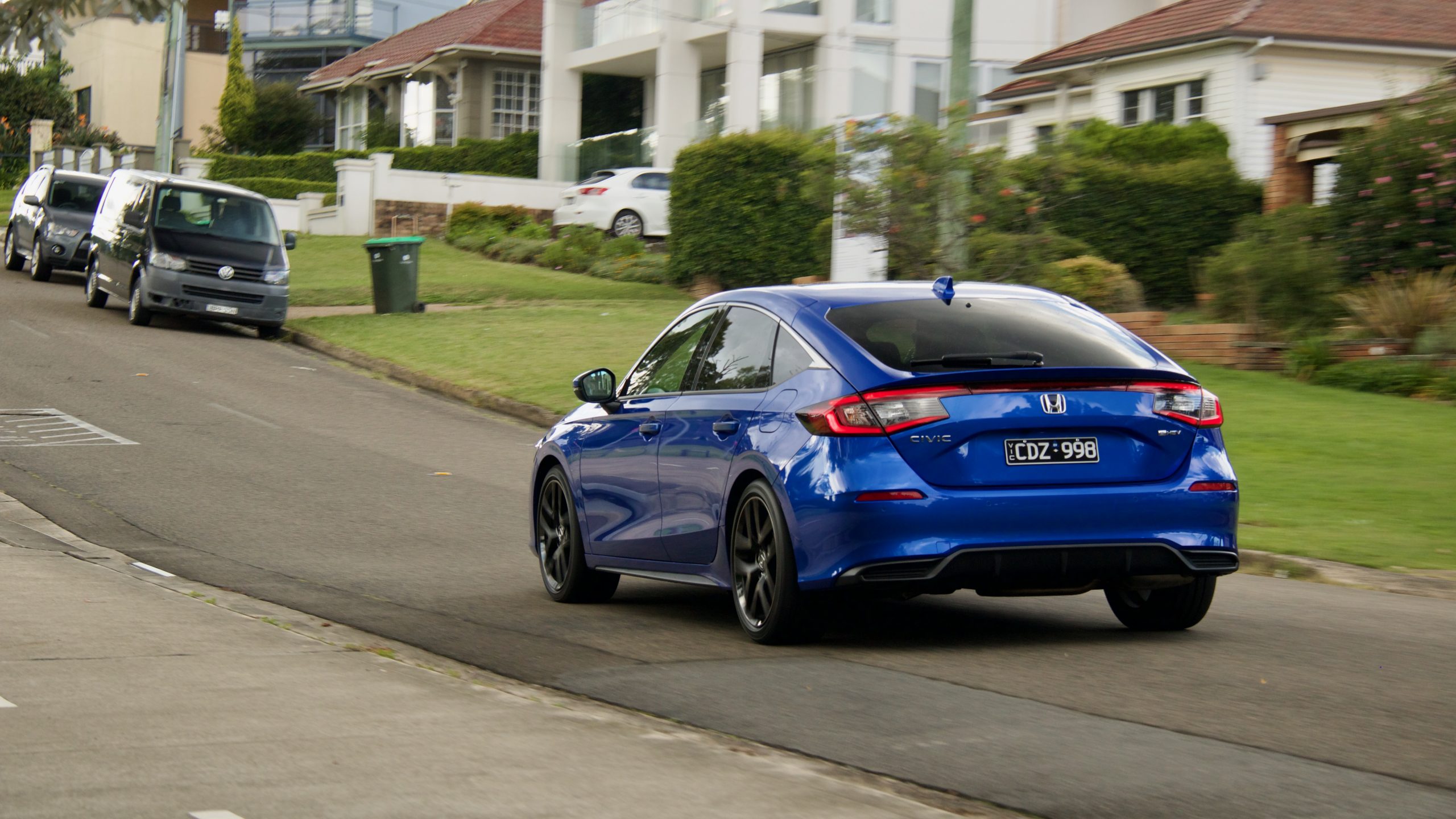
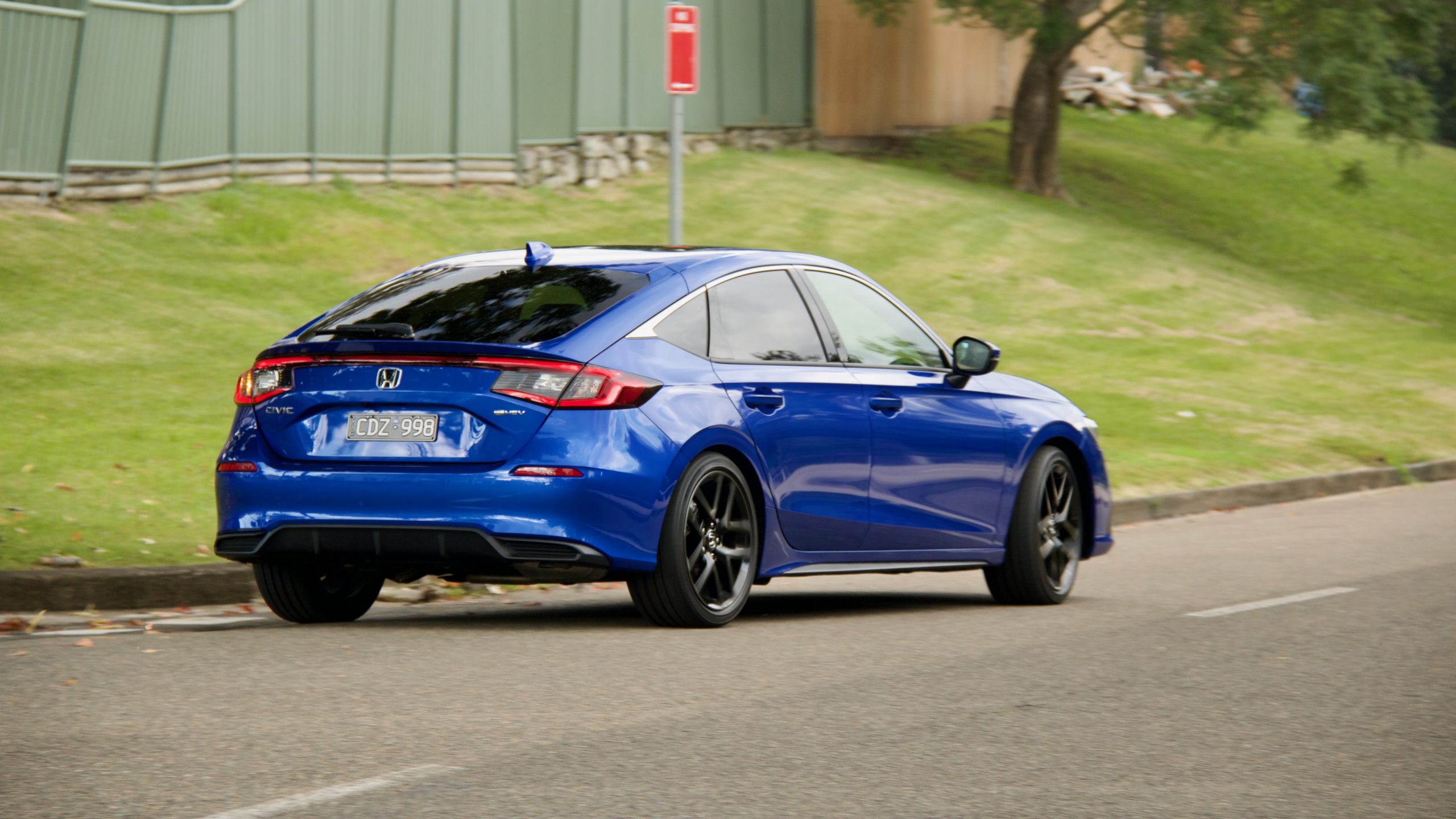
Elsewhere in the driving experience is positive too, with somewhat hushed road noise levels, though the rear visibility isn’t amazing. Honda’s suite of active safety equipment – or ‘Honda Sensing’ in Honda jargon – is nicely tuned for Australian roads. We particularly like the Tesla-like display in the driver’s information cluster which shows the car driving and both lanes and cars surrounding it – plus, it even cleverly shows if the lights are on or if you’re indicating.
Interior & Practicality: 9/10
As we found in our review of the petrol Civic VTi-LX, the interior of the new shape Honda Civic is a big step up from the last-generation model. Its quality is much better, it feels more modern, there’s a lot more in-car tech and it’s more cleanly integrated as well. Quality is a strong point, with nicely soft materials on the dashboard and door tops, nice quality leather on the seats, door and steering wheel and the switchgear – in particular, the window controls and air vent knobs – feels great.
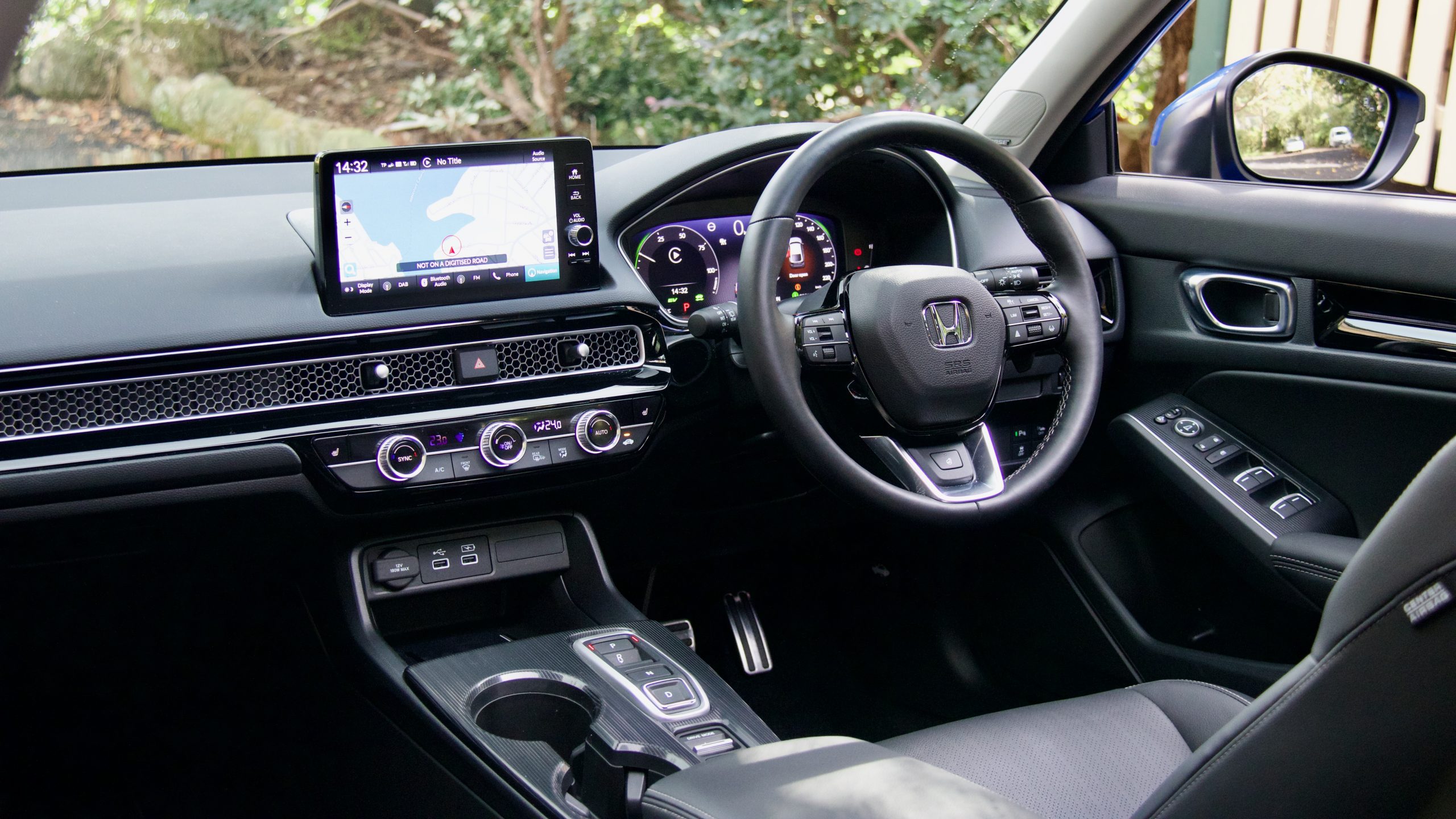
Sitting in the middle of the Civic’s dashboard is a 9.0-inch touchscreen with wireless Apple CarPlay, wired Android Auto, satellite navigation and digital radio. It’s the same unit that’s used in the HR-V, and it’s very easy to use, quick to respond to touch and its screen quality is reasonable as well, though the latest Toyota system has nicer screen quality. The rear camera picture quality leaves a bit to be desired, however. The 12-speaker Bose sound system is nicely punchy with nice bass.
Ergonomically, the new Civic’s cabin is excellent. Everything is simple to use and within the driver’s eyesight with big and simple icons, and unlike the Mazda3’s infotainment system, the Civic’s is controlled by touch. The visibility offers a wide view in whichever direction you look – though we still wish it had a 360-degree camera to help with parking. The seats are also quite comfortable and offer good side support.
The Civic’s cabin is quite practical as well. There’s plenty of space for your trinkets, like big door bins, a large glove box, a big centre box underneath the centre arm rest and big cup holders, while the wireless phone charger underneath the dashboard is large as well, and very handy.
Like the previous-generation Civic, the rear seat is quite roomy for the segment – especially against the cramped Mazda3. Even taller people will fit fine with ample leg- and headroom, while the large windows give good outward visibility as well. There are also rear vents, a centre armrest with cup holders and pleasingly, the hybrid fixes two issues with the petrol car: it has a second map pocket and it also has two USB-A ports to charge devices – though still no heated seats.
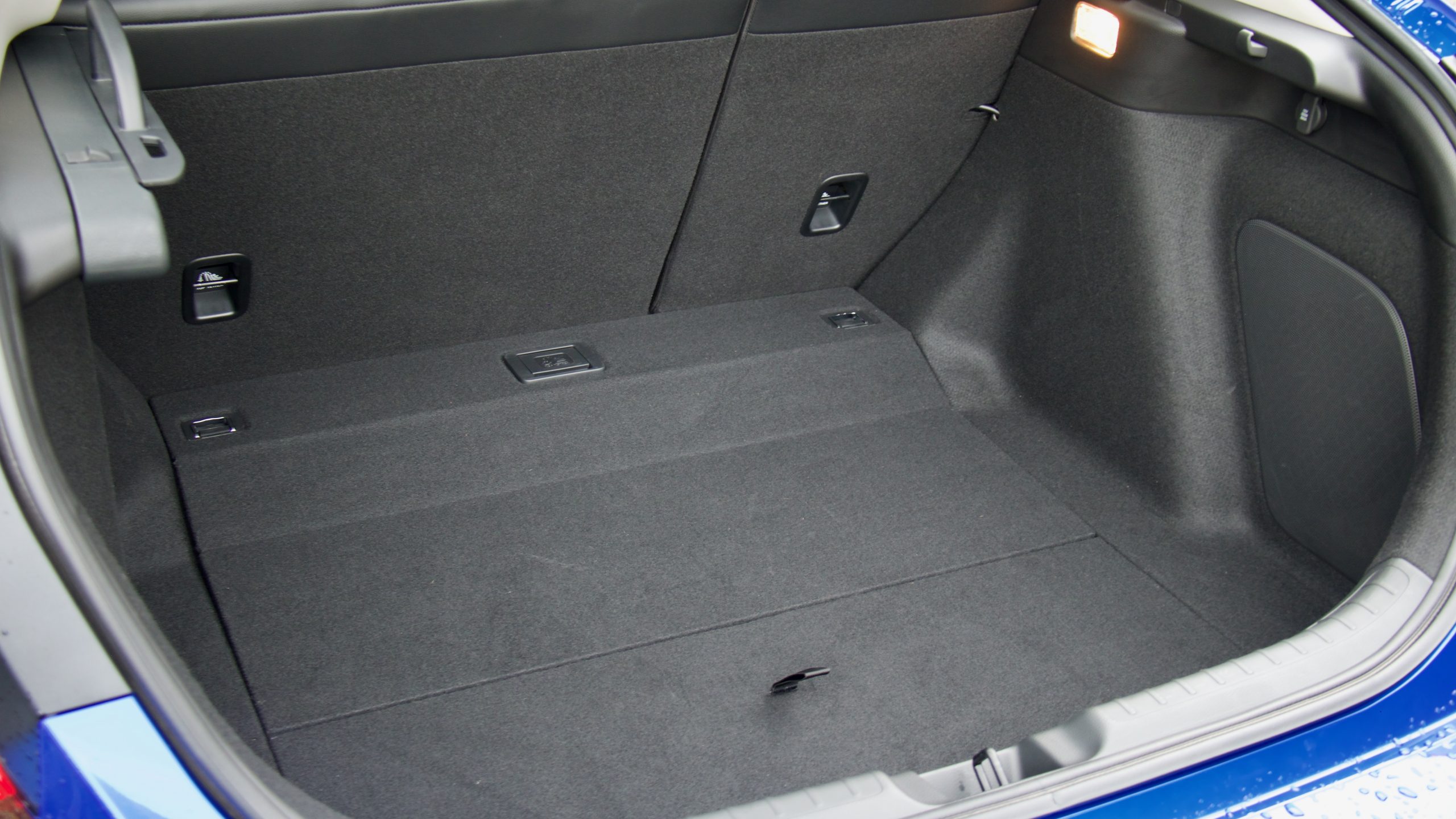
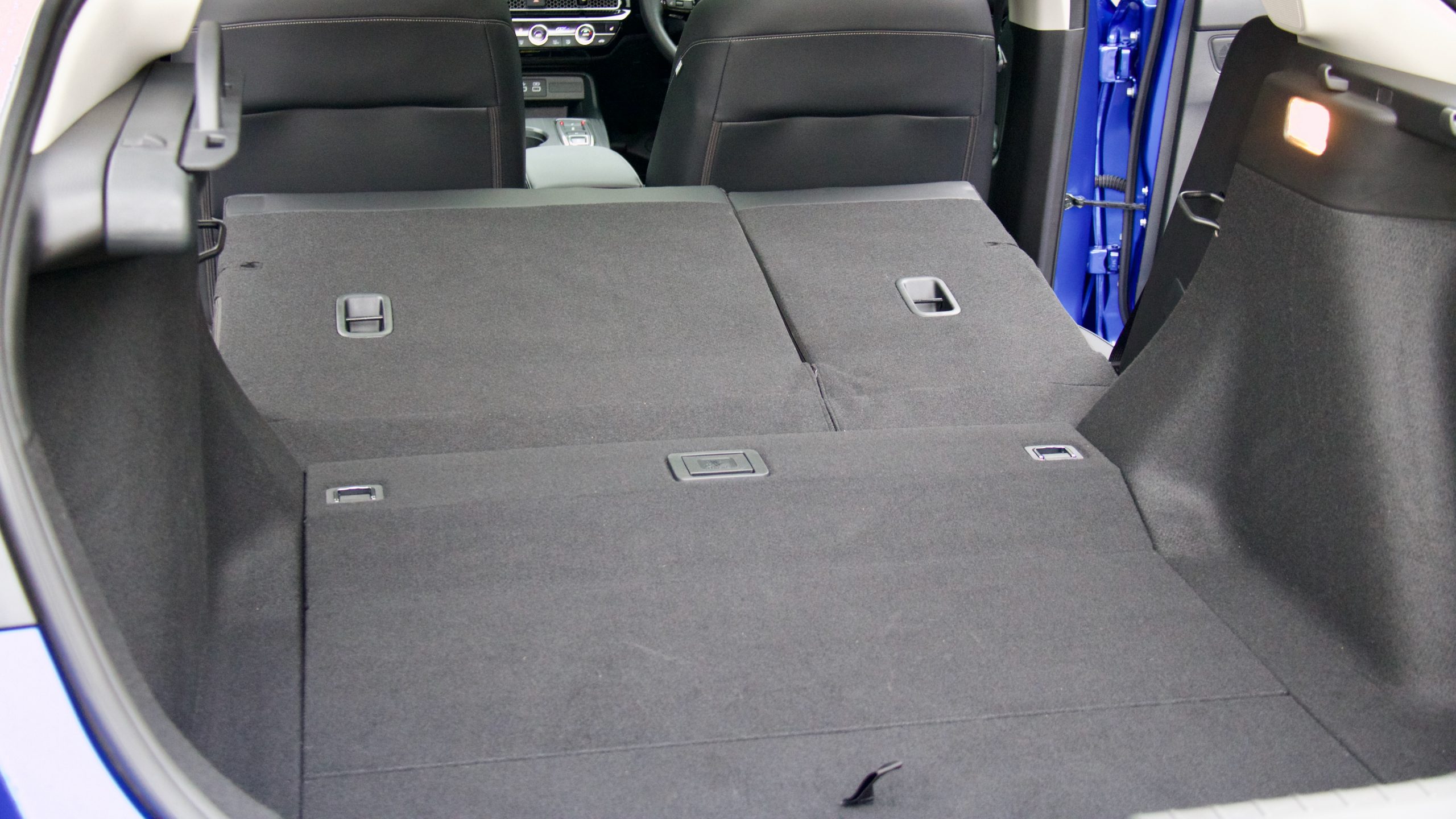
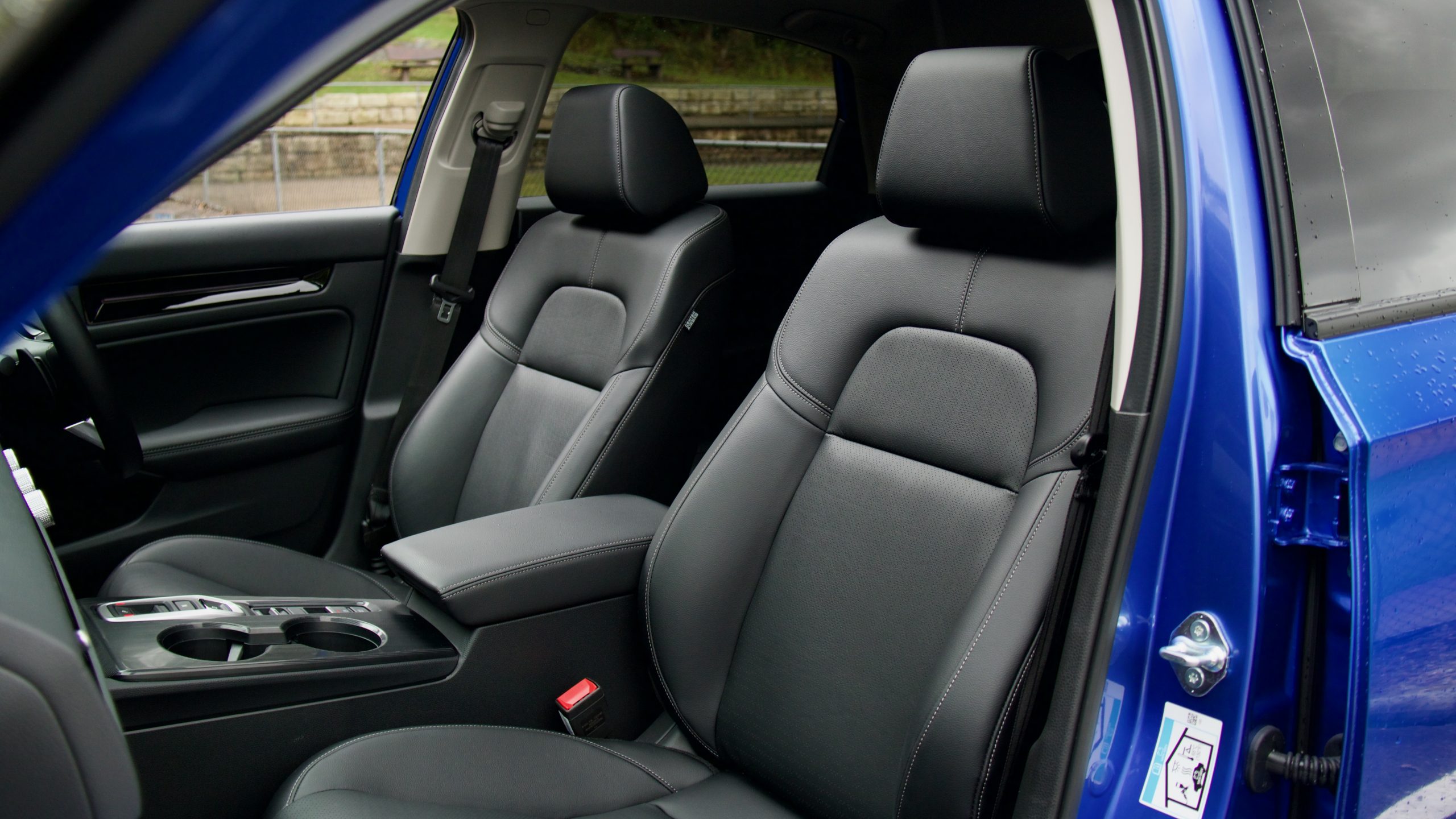
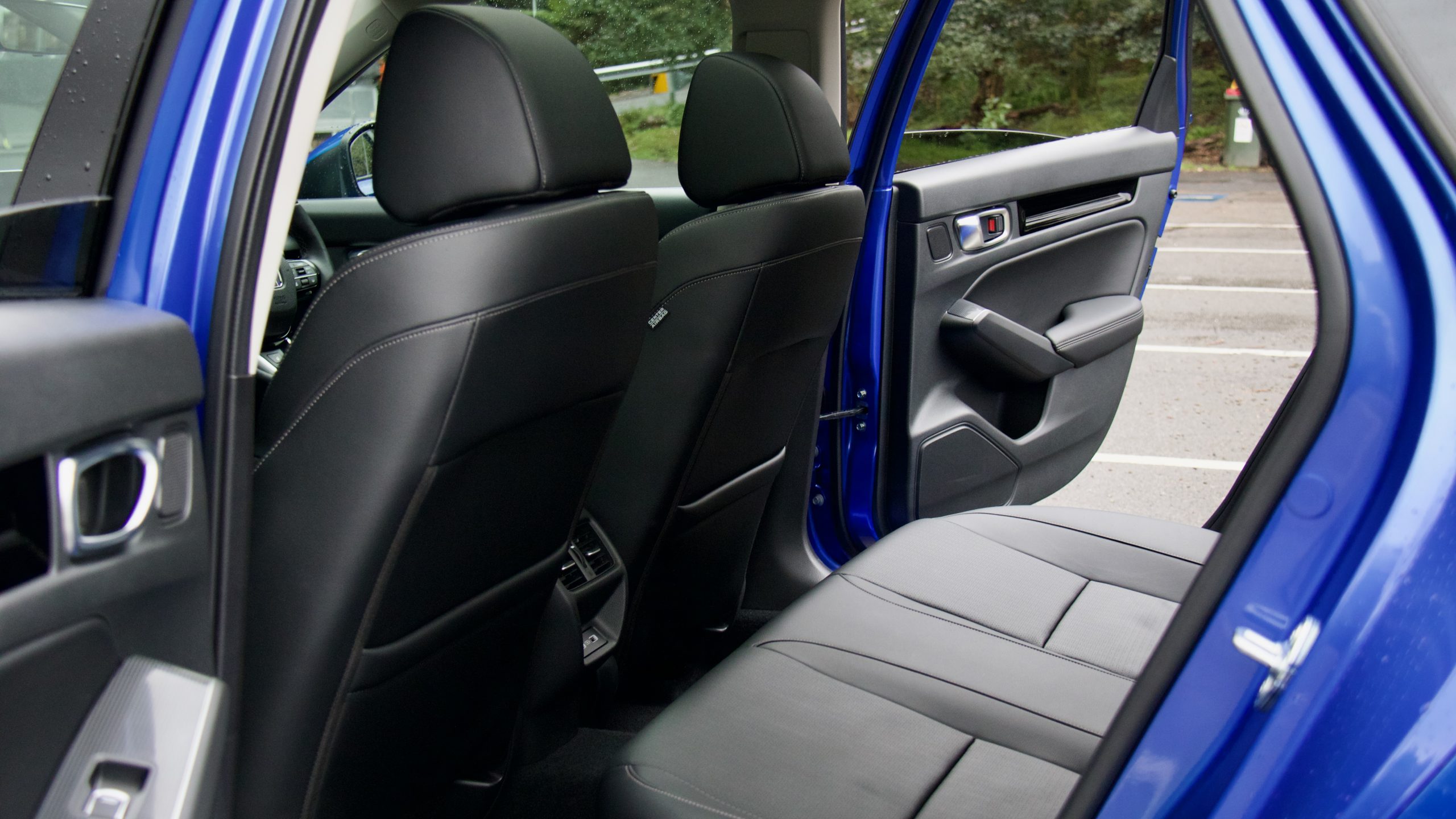
Despite featuring a smaller boot than the petrol Civic – 409-litres for the hybrid versus 449L for the petrol – it is still a lot larger than the 333L Corolla ZR Hybrid and 298L Mazda3. It is a large and flat space with some under floor storage, a 12V socket, plus a really cool cargo cover that slides horizontally across the boot and can be easily removed altogether. There’s no spare wheel, unfortunately – though the petrol Civic also shares that feature (or lack thereof).
Service & Warranty: 9/10
As with other new Honda products, the 2023 Honda Civic e:HEV LX comes with a five-year/unlimited km warranty (eight years/160,000km for the battery and hybrid bits) with five years of roadside assistance and cheap servicing for the first five years as well: just $199 a pop (for each yearly/10,000km service) adding up to $955 for five years of servicing. Only the short 10,000km service intervals take a shine off things slightly.
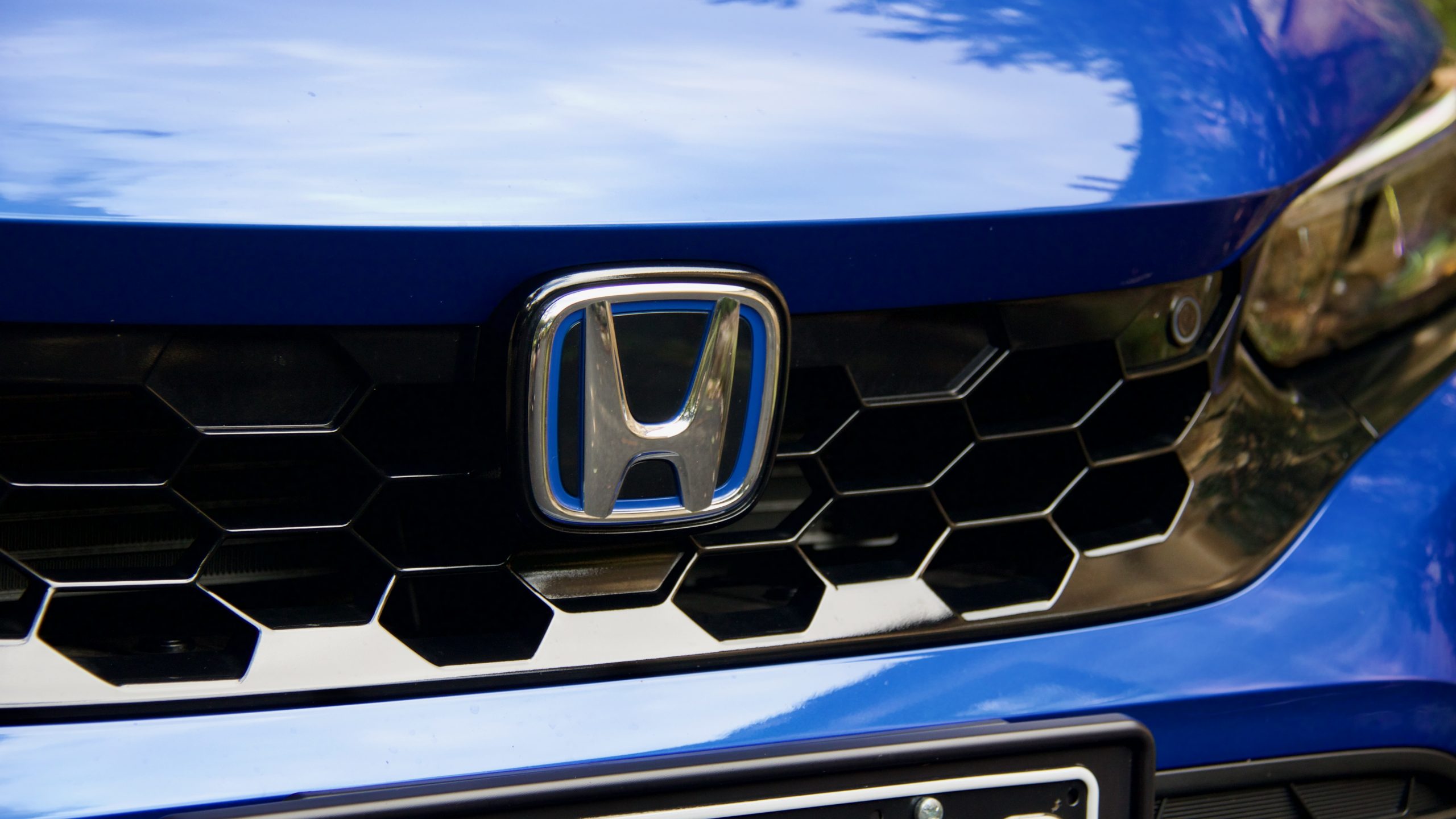
Both Toyota and Mazda also give five year/unlimited km warranties with their new cars, with Mazda also offering five years of roadside assistance (Toyota gives none). If you service at a Toyota dealer, you earn an extra two years of mechanical warranty and up to 10 years’ warranty for the battery. Five years of servicing a Corolla ZR Hybrid costs $1,250 ($250 per service) and the same for a Mazda3 G25 Astina costs $2,054 ($410 per service) – though, like the Civic, the Mazda3’s service intervals are 10,000km, which is 5,000km less than the Corolla.
The 2023 Honda Civic e:HEV LX Hybrid DiscoverAuto Rating: 8.4/10
Overall, the 2023 Honda Civic e:HEV LX hybrid is a very impressive car that offers a lot to a lot of new car buyers. Even though many buyers have shunned hatchbacks in favour of larger and supposedly more practical SUVs, the Civic’s boot and back seat are huge and in sizing, it’s larger than a first-generation Accord Euro that wore a mid-sized tag. It drives very well, its hybrid system is great, it’s packed full of tech, it looks good, its quality is great and it’s an excellent all-rounder.
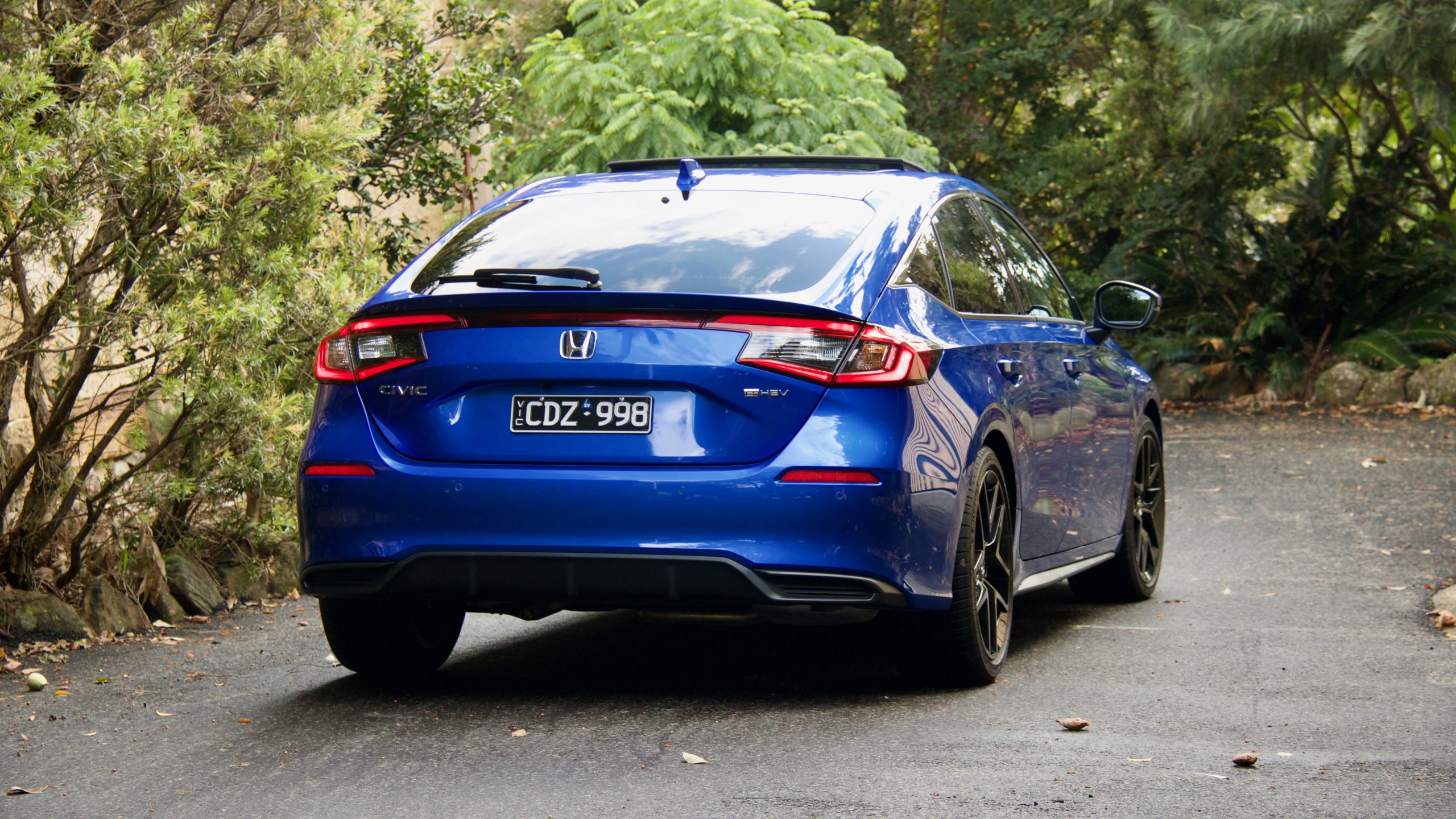
There isn’t much that’s wrong with the car itself – there’s no spare wheel, it’s missing some equipment from overseas models and there’s only three exterior colour choices. And of course, the big one: price. At $55,000 drive away, it’s just too expensive in our opinion – further emphasised by the recent announcement of the brand’s new ZR-V mid-size SUV that undercuts the Civic hybrid by $100 despite using the same drivetrain. But if you can get past the price, the Civic hybrid is a great car that further shows the talent of Honda’s engineering and it proves that an enthusiast will like driving a hybrid.
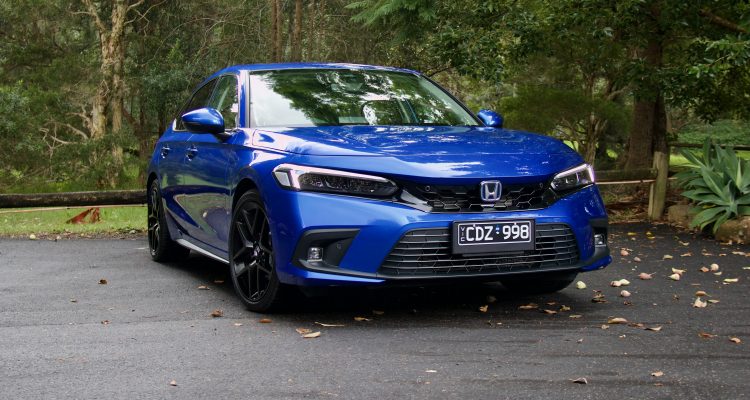
Leave a Reply